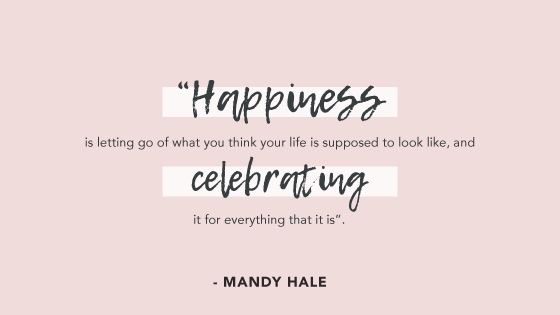
Why Happiness Matters
I’m not sure if you’ve realized it yet, but life is hard.
Like, really hard sometimes.
There are pressures and stressors and both bad and sad things can happen. Anxiety and depression and stress are at an all time high. Too much is happening too fast and it can be overwhelming to say the least.
I, however, believe focusing on the good is generally more fun, healthier, and more productive, so I’ve made it my life’s mission to try and make people happy. Sure, confetti is my vehicle for doing just that (as it literally represents the little bits of happy I want to spread in this world), but my motivation really comes from a much deeper place.
I’ve dealt (and still deal) with my own versions of stress and anxiety and overwhelm, and that’s why I am so passionate that now more than ever it’s crucial to really take the time to celebrate even the smallest of moments — because despite all the bad, there are still so many amazing and wonderful things to be grateful for.

Happiness is inspiration. It’s creativity. Magic. Good vibes. Positivity.
It’s more than just a mood or an emotion — it’s a philosophy and a state of being that encompasses everything it means to live a good life and thrive (as opposed to just “survive”).
It’s what makes us feel good. It’s what makes us do good.
(And let’s not forget there is an actual science to happiness, too. For real. Certain neurotransmitters / hormones / chemicals in our brains are what allow us to feel the sensations related to “happy,” and there are things we can do to optimize our bodies for overall good vibes.)
Bottom line? Being happy is essential for our overall well-being, both physically and emotionally, so let’s all agree to strive to be the happiest we can be!
What Does It Mean To Be Happy?
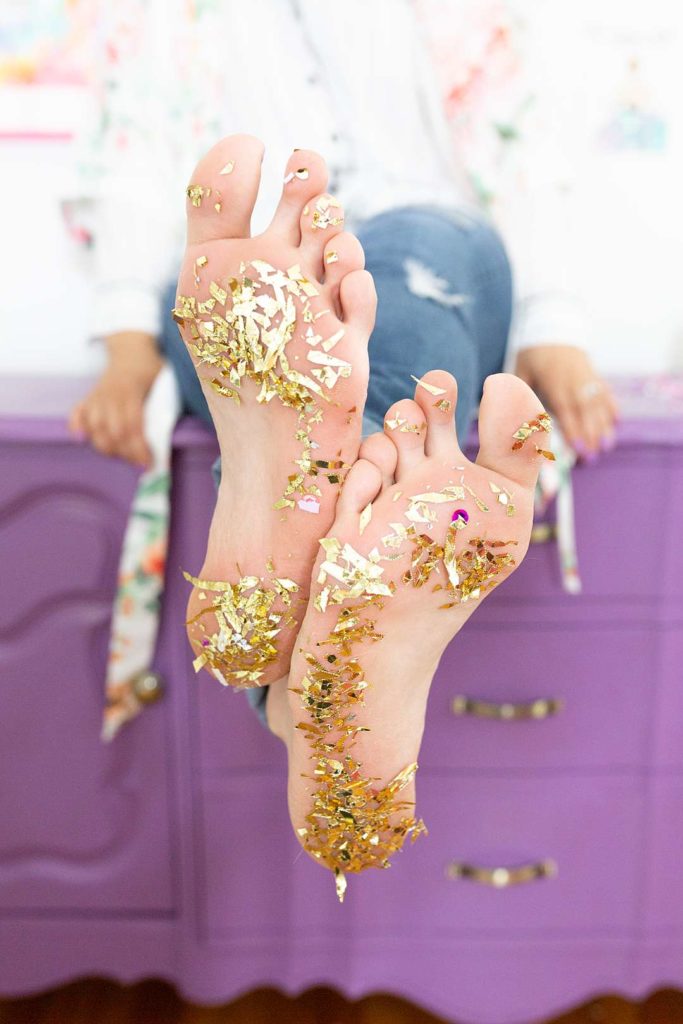
So now I’m going to ask you a loaded question: Are you happy?
Big stuff, I know.
While I think (at least I hope) that if you’re reading this it’s because you love all the color and magic shared around these parts, can we step back for a minute and really think about what happiness is/means?
I consider myself a happy person. If someone asks me “Are you happy?” I can genuinely say yes.
Does that mean I never get sad or depressed or anxious? Does that mean there is nothing I would change about my life? Does that mean I have a smile plastered on 24/7 and I literally throw confetti at random passerbys on the street?
Nope, no, and no some more. (Although I wish I could randomly throw confetti at strangers sometimes. 😅)
Of course this then begs the question: what the heck does being happy mean?
While we could probably debate the point forever, let’s just agree right up front that happiness — just like health and wellness — is personal and subjective.
I mean I can say with a high level of certainty that spiders make me quite unhappy, but who knows — you may love the terrifying cute(?) creatures. My point is, what makes me happy might not make you happy and vice versa, and that’s A-OK. In fact, it’s downright awesome that we’re our own unique selves.
We’re fluid creatures, always changing and evolving, so it makes sense that a state of our being is also fluid. But — for the sake of context — I do think it’s important that we have a way to measure happiness on some type of mutually understood level so we can start on the same page. Sound good?
I’ve done a lot of research and thinking on the subject (and the quote from Mandy Hale above is a good place to start), but ultimately here is one of the simplest methodologies when it comes to measuring happiness:
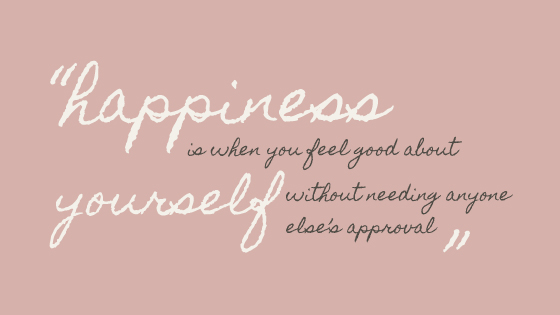
Happiness is when you feel good about yourself without needing anyone else’s approval.
Really let that sink in for a minute. And really be honest with yourself if this is something you think is true for the various aspects of your life you might be feeling insecure in. Are some of the things you think make you happy really based on feedback from others? Do you feel outside forces have to “approve” of or influence your choices in order for them to be relevant or valid? (And yes, things like the number of friends/likes/comments you have on various social media platforms count as outside influence!)
I, for one, can say I MOSTLY don’t feel the need for anyone’s approval to do my thang, but sometimes I definitely have to check myself when the anxiety/fear/overwhelm/self-doubt/comparison starts to creep in. I have to remember it’s a journey, not a destination.
What Happiness Isn’t
I’m also going to let you in on a big secret (that I already sort of spilled the beans on): being happy doesn’t mean you’re never sad. Or that you have to smile 100% of the time. Or that you you are always confident and never have self-doubt or stress or anxiety.
Being happy is more about how you react to situations and choose to frame them. Without knowing the bad, how could we recognize the good, right? So yes, there are going to be some things you unfortunately just have to endure whether you like it or not, but it’s up to you how much you’ll let these things define you and your happiness.
Happiness is not about being perfect; it’s about recognizing that being happy is worth pursuing despite all the challenges life throws your way.
If you really want to get down to it, happiness is a mindset and mainly an issue of self-confidence — trusting yourself enough to know you can find a way to thrive in any given situation.
Social Happiness vs. True Happiness
In a time when social media / instant (plus constant) communication are second nature and we are particularly overwhelmed with all the outside “noise” going on out there, I think it is extra important to know that your happiness should never be tied to or dependent upon anyone else. I once read that “happiness is an inside job,” and I really do believe it should be based on individual self-reflection. That’s not to say others can’t or shouldn’t help amplify your happiness (in fact happiness has a cascade effect that we should aspire to propagate), but you shouldn’t rely on them for your own individual well-being. (And even though this should be quite obvious, I’ll add a caveat to say that your own happiness shouldn’t negatively affect anyone else — i.e. If it makes you happy to say rude or harmful things to people, I think it’s time to re-evaluate some life choices.)
Just remember that while happiness is a personal journey, having relationships with other humans is part of that journey, too. Unless you’re a recluse and can live off the grid in some isolated cabin where you eat wildflowers and fashion clothing out of leaves and mud without any modern conveniences, chances are you need to interact with others. Happiness breeds happiness (just as negativity breeds negativity), so ditch as many of the bad vibes as you can.
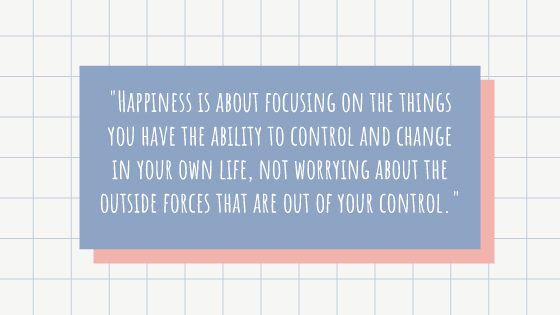
Check-In With Your Feelings
Like most things worth having, happiness can take some work to maintain through consistent & thoughtful action. Now that you know a little bit about what happiness is (and isn’t), it’s a good time to ask yourself two very important things:
1. What makes me happy?
2. What makes me unhappy?
More big stuff.
And it can for sure be overwhelming to think about everything all at once, so I recommend starting with various aspects of your life separately. (Work, home, relationships, finances, etc.)
Focus first on feelings rather than physical things (i.e. I want to feel safety and comfort vs. I want a million dollar mansion.) Spoiler alert: sometimes the things we think will make us happy aren’t the things we’re truly looking for.
Once you master the types of feelings that can make you happy you can then focus on how to turn those feelings into physical, tangible representations and goals.
Remember that the answers to these questions will (& should) be constantly changing and evolving depending on your circumstances / stage of life, which is why I suggest asking yourself them regularly. Heck, if you asked yourself these two questions every morning, imagine how it might frame your entire day: Would you focus more on the things that make you happy? Would you be more motivated to change the things that make you unhappy? Because that is the beauty of this entire thing: you can design your own version of happiness. That’s right folks, you can actually make happy!
Easy peasy, right? 😏
(Don’t worry, though — I’m here to help! I even have a handy workbook for you at the end of this post.)
Designing Happiness For Health, Home, And Heart
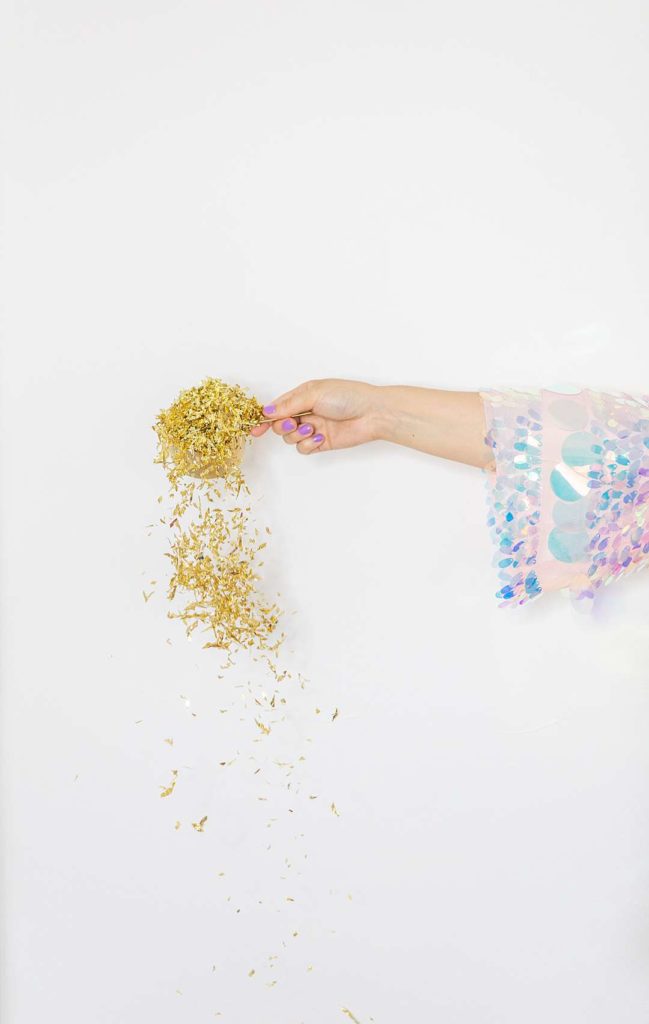
All of this is my long-winded preamble to say that I think happiness is über important (on both an individual and collective level) so I want to do my part to share and encourage it. I don’t know about you, but I for one prefer to live in a world filled with creative, productive, and inspiring individuals so we can have more art and magic and growth and connection.
In an effort to do my part, I’ll be sharing info, tips, and resources for creating & strengthening your own little happy life as The Confetti Bar’s broad mission.
But, as a summarized overview, right here we’ll talk about the three main areas to focus our happiness designing efforts:
Part 1 focuses on physical health & wellbeing.
Part 2 focuses on creating a happy and inviting environment & atmosphere
Part 3 focuses on developing & fostering inner happiness.
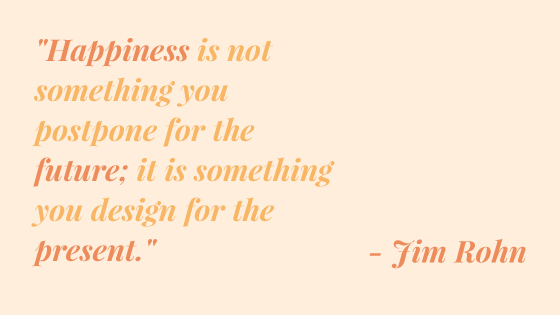
A few last reminders/disclaimers before we get to all the fun:
- Know that I am in no way perfect and I still have to work on this stuff just like everybody else. But I have put all of the info I’m going to share into practice, so I know it works!
- A LOT of info is coming at you, so it might seem overwhelming at first. Take things a little at a time and don’t feel you need to do everything all at once. (I certainly don’t!) Just tuck some ideas away for when you’re ready.
- Only use the things / info that speaks to you personally, but also don’t be afraid to try something new (especially if you’re not getting the results you desire.)
P.S. This page contains affiliate links, often denoted with an asterisk (*). This means The Confetti Bar may receive a commission for purchases made through these links. (Because, bills. 😆) As an Amazon Associate, The Confetti Bar earns from qualifying purchases. Have further questions regarding sponsored posts and affiliate marketing in general on this site? Check out more info here.
Ready to dive in?

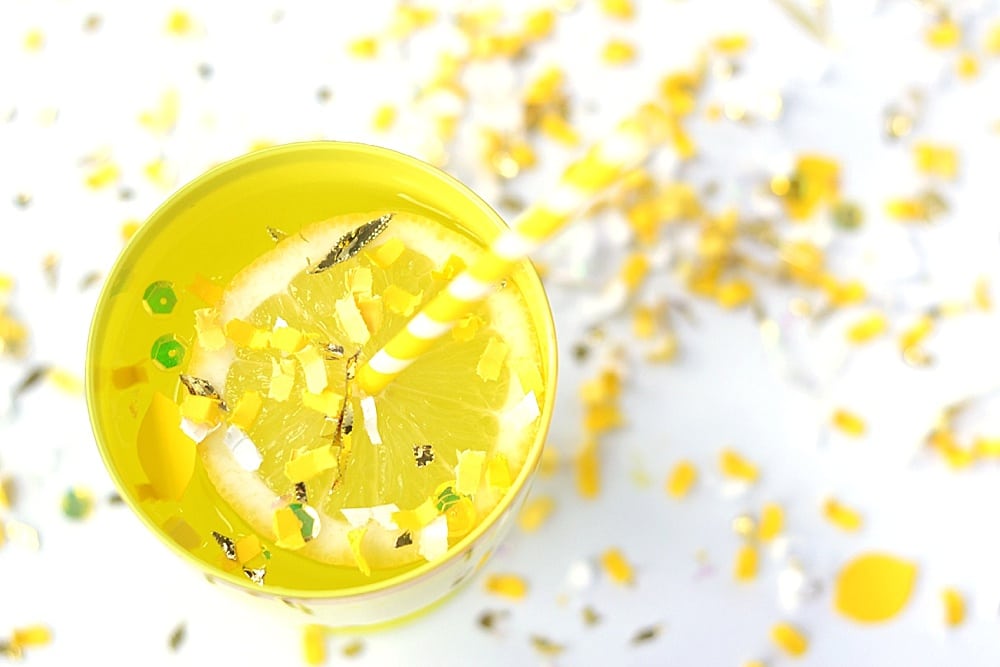
Before we can get into all the fun of making our homes and hearts happy, it’s important we make sure we set ourselves up for success. Maximum happiness & productivity begins with our physical health and well-being, so managing stress and anxiety is a HUGE factor.
In an effort not to make this post a billion miles long, I won’t get into my full story now (if you want to read it, though, you can do so here), but the short version is this:
I used to have really bad panic attacks/anxiety, to the point where there were times I could barely function and felt utterly hopeless. I was able to cure* it through diet & lifestyle changes.
(*And when I say “cure,” I mean I no longer have extreme panic attacks or anxiety that is debilitating. Does that mean I never ever feel anxious anymore? No, but when I do it is mild and for a very specific reason that I can address rationally. The nature of modern life means we will ALWAYS have stressors, so rather than rid it completely, I focus on managing stress in a natural and effective way. If you really want to get into it, to a certain degree anxiety is actually a normal human response, and can even be helpful if framed the right way.)
We Are What We Eat
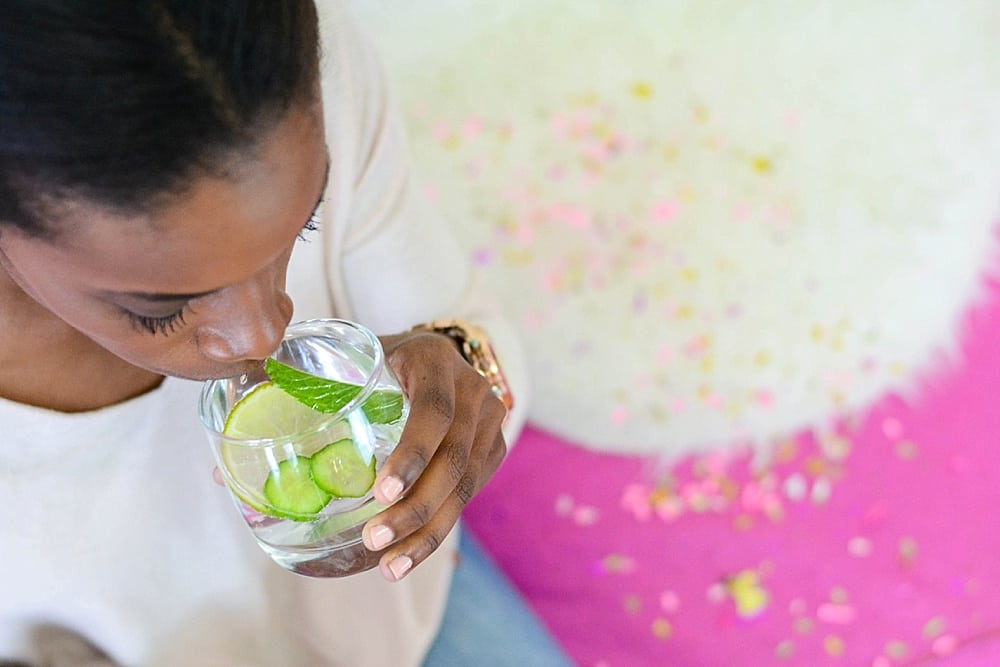
It’s totally true that we are what we eat, so if we eat bad things, we tend to feel bad. If we eat good things, we tend to feel good. Pretty simple science.
So my first tip for managing stress and overwhelm in your life is to address what you put into your body. (In my world, caffeine, alcohol, sugar, dairy, most grains, and processed foods are no bueno.) Now I am not a doctor or nutritionist so I won’t get into individualized diet plans, but I know from personal experience just how important cutting out the junk is, and there is plenty of research to support the food-mood connection.
Let’s keep it real, though – changing our habits is hard, especially when it might take more time (and maybe money) to do so. But if I’ve learned one thing in this life so far, it’s that feeling healthy and happy is an excellent reason to invest in yourself. Until I found myself completely overwhelmed – both physically and mentally – by not feeling in control of my mind + body, I didn’t quite realize just how much what we put into our bodies affects how we feel, both inside and out. But now it seems oh so obvious, no? Eat good, feel good, do good. Rinse and repeat.
I will be the first to admit I am in no way perfect, and I constantly have to remind myself of all the things I’ve written about here, but in a strange way I was lucky that I once felt so completely sick and awful, as that was a really strong motivator to drastically change my habits. I don’t ever wish anyone to have to feel that way, though, so if I can offer some ideas for prevention, I’m all for it! Sometimes we don’t even know how sick we really are until it’s too late, so making changes even when you think you feel fine can turn out to be greatly beneficial in the long run.
While I hope these tips and tricks can be used as a guide, it is important to note that every single person is different. Just because something works for me, doesn’t mean it will work for everyone, but I really encourage you to listen to yourself and find your own balance. I am not a doctor, nor is any of the information contained on this site meant to be professional advice, just my two cents thrown in the mix.
I get more into this both in Part 3 below as well as this post about how to define health & wellness, but here are some top tips for living a healthier life:
- Read. One of the simplest things you can do is just start really paying attention to food & product labels and the list of ingredients. You’ve probably heard this a million times by now, but most of the time if you can’t pronounce something, it probably isn’t great to be putting into your body. If you don’t know what all the ingredients are in something, look it up to see what it is so you can make more informed choices based on what something is, where it comes from, and what it does for your body.
- Research. You will always find differing opinions on just about every single subject, so I highly encourage doing lots of your own research before deciding what is best for you. Read the good, read the bad, and try to make an informed decision on the proposed risks vs. benefits.
- Be Committed. If you really plan to change your lifestyle, you need to be committed to making changes for the long haul. Only you know how bad you want to change and how committed you are willing to be. Is it more expensive to eat healthier? Seemingly, yes (although there are some caveats to this point!). Is it more time consuming to prepare your own food fresh than grabbing some fast food? Absolutely. Is it hard to make time to exercise a few times a week? For many, sure is. But you have to decide for yourself if your health & overall well being (and maybe that of your entire family) is worth making a few sacrifices. Think about your current habits that you set aside time and money for (shopping spree? watching a favorite tv show every week? going to the movies? eating out three times a week?) and evaluate how you can make adjustments to accommodate new ones.
- Be Patient. There is no “quick fix” for health, so you need to make sure you can see it through to really start feeling and seeing the benefits. Is it hard? It can be. But the more you stick with eating fresh, the less you crave the sugary, processed, chemical-laden foods and prefer things that are natural, flavorful, and nutritious. The more you stick with developing healthy habits the more you look forward to them as an integral part of your life. And the more you become aware and informed of the things around you, the more you feel in control of your own happiness and well being.
In addition to focusing on a clean diet, I also have some routines and products that help keep my overall stress and overwhelm levels in check.
Create A Morning Routine
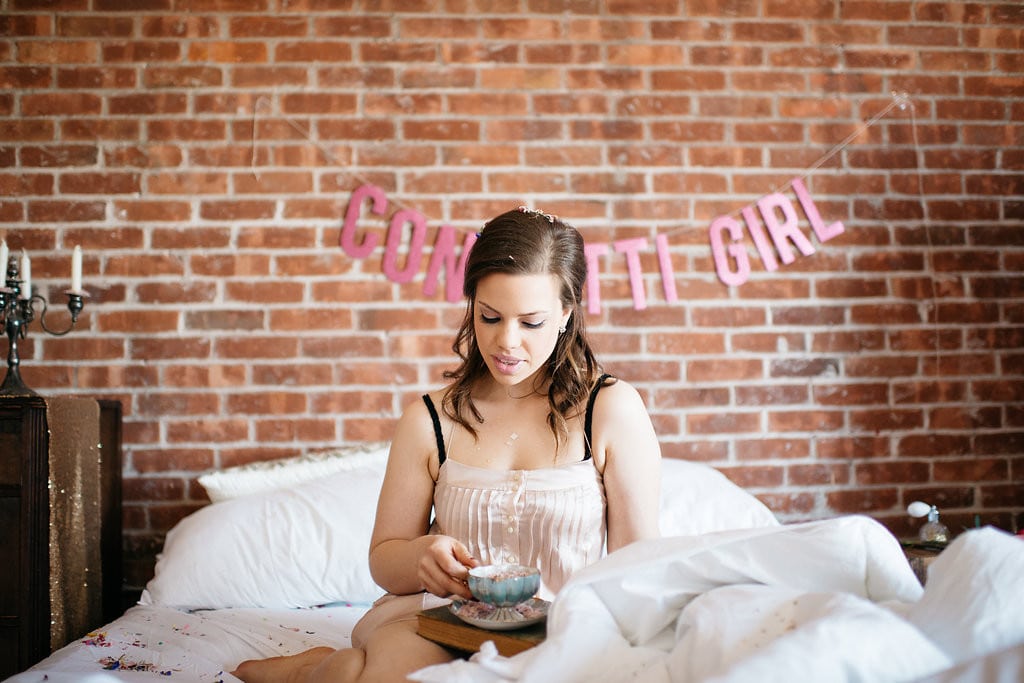
Every day is a new opportunity to start fresh and make changes, and the way you start your day often dictates what will follow.
Creating a morning routine that sets you up for optimal success is essential to developing healthy habits.
What you include in your morning routine can (and should) vary depending on your bigger goals, but here are a few things I’ve done or currently practice for inspiration:
- Wake Up Call: Set an alarm to make sure you’re not sleeping in too late. While waking up to your body’s natural rhythm is best when possible, the reality is most of us have things to do or places to be first thing in the morning. (Work, school, drop-off, etc.) There is no worse feeling than being rushed and frazzled as soon as you wake up — that’s when things get forgotten or shortcuts have to be taken. By waking up with plenty of time to get ready and not rush, you’ll feel more relaxed all day long.
- Shower: Clean off whatever happened yesterday/overnight and start your day fresh! Even if you don’t wash your hair everyday, a quick rinse does wonders to rejuvenate. Having yummy smelling soap & lotions often makes this extra enjoyable, too, like starting your day with your own mini spa experience.
- Constitutional Hydrotherapy: After a warm shower, lay with an ice cold towel on your chest for 15 minutes. (You can find more about how to do it here and what it is/why it helps here. 👈🏻 This second link is from the naturopathic center here in CT I go to and you can feel free to email me if you want more info! I’ve never done their official hydrotherapy, only the home version they told me about.) There is evidence for all the physical ways this process is healing, but I find, at the very least, it is a meditative experience for me.
- Journal: Keep a notebook by your bed, and after your shower sit and write about whatever comes to mind — thoughts, ideas, what you did/want to do, etc. If you want a really comprehensive video series on the benefits and power of journaling, I suggest checking out Benjamin Hardy’s Journal Mastery course, and you can get his free Peak State morning check-list here. (This is not an affiliate link or anything — I just think it’s a great resource!)
- Meditate: Taking some time and space to connect with yourself and your thoughts before the noise of the outside world comes rushing in. If you have trouble meditating on your own, guided meditations can be a great way to find focus. My favorite free app to use is Insight Timer.
- Drink Warm Lemon Water: 1/2 of a fresh lemon, juiced, added to a glass of warm (not hot) water sipped through a straw. Lots of health benefits with this one, plus it tastes yummy. 😊 I even have a hack to help you add it to your morning routine easily!
It’s important to note here that none of these have to take more than 15 minutes, and you can even combine them (i.e. meditate while doing the hydrotherapy, or drink lemon water while journaling.) They are quick yet effective things that will allow you to start your day calmly and clearly.
Also remember to make your bed, straighten up any clutter, and try to avoid looking at your phone for the first hour or so after waking up so as to avoid bombarding yourself with outside noise before you’re fully grounded and ready.
Daily Stress Management
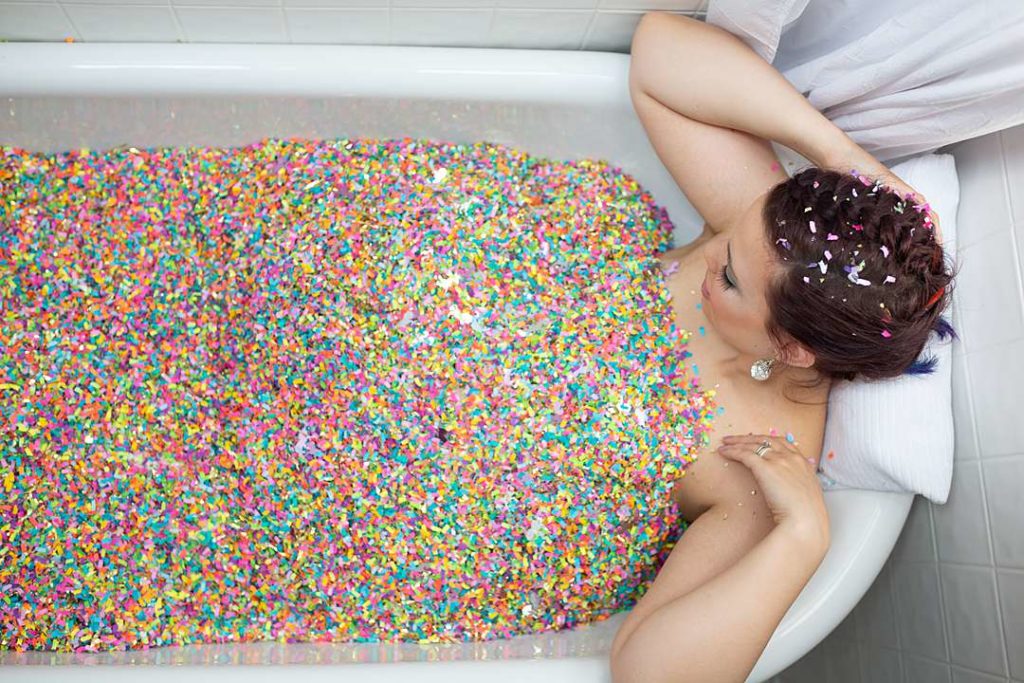
Once your day gets started, it’s easier to get sucked into the craziness of it all. For a lot of us, time is not always our own — demands of a job, household, family, etc. can pull us in a million different directions, so it is important to have little things to help manage our stress so we can best foster inspiration & creativity (and of course happiness) by staying calm and relaxed. (Easier said than done sometimes, I know, but continued effort adds up!)
Here are some of my favorite products/techniques to go to (as needed) when feeling anxious or overwhelmed:
- GT’s Kombucha: While kombucha in general is not exactly meant to keep you calm (although it has a lot of other great health benefits!), I find that drinking a bottle of GT’s Gingerade does in fact relax me. I mean it does have a smallllll amount of alcohol (and as I mentioned I don’t really drink), so maybe that plays into it. 😂 🤷🏻♀️
- CBD Oil: Perhaps a bit controversial to some, CBD oil is not meant to get you high, but it’s been well-documented to possess anti-inflammatory, neuroprotective, and anti-anxiety effects. My go-to brand, Fab CBD*, offers oils, gummies, and even a topical cream.
- Oregon’s Wild Harvest Biodynamic Herbal Tonics: I’ll sometimes take a few drops of these bad boys in a shot of unsweetened cranberry juice. They actually don’t taste too bad, but are definitely herbal. My personal faves for keeping calm are are CountToZen, Namaste, & SawLogs (for nighttime).
- Chamomile Tea: Chamomile is one of the most ancient medicinal herbs and is often used for a variety of ailments, but it perhaps most notable for its calming properties in relieving anxiety. I’ll often have a cup before bed, but will also have it during the day if I need a time-out. (Rishi’s Chamomile Medley or Golden Chamomile Blossoms are my current faves.)
- Essential Oils / Scents: Just like color, scent can play a huge role in how our mood is affected, and I like to use fragrance to lift my mood or calm me down when needed. Essential oils, candles, and even perfume are all things I like to utilize when I need a quick boost.
- Candles, Music, Art Therapy: The scents, sounds, and decor we surround ourselves with also play into our overall health and well-being, but I’ll get to more of this in Part 2: Happy Home.
- Exercise: I’ll be perfectly honest and say that I am one of those people not really into “exercising” regularly. I mean sure I liked to walk and be active, but going to the gym? Taking regular classes? Not really my jam. BUT I do try to get outside when I can, and taking walks or going for hikes is most therapeutic for me. If you find your exercise game is lacking but want to get more into it, I might suggest trying the app, Aaptiv. It’s all audio-based guided workouts for the gym, walking, running, strength training, etc., and even includes meditations and yoga. I’ve found it’s helped to give me some motivation when looking to do a few workouts, and I’ll rotate in some of the meditations. Oh, and the best part? When you complete a workout on the app, confetti rains down. 🙂
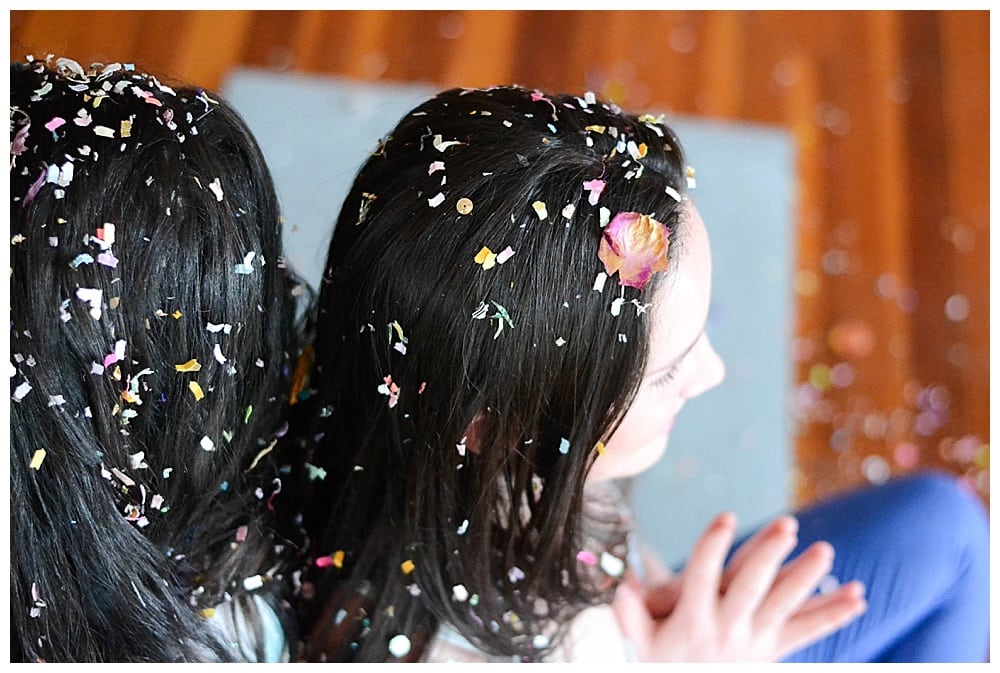
Some other things I’ve heard good things about / want to learn more about & try are a calming water fountain, incense, smudging, utilizing crystals, floating tanks, and tapping. If any of you have resources or faves for any of these, hook us up in the comments below! 🙏🏻
I also think it is very important to remember that we all need something just for ourselves at some point in the day (reading a book for 30 min, watching an episode of a TV show during lunch, sitting down to a cup of tea and a favorite magazine, doodling, etc.), so be sure to carve out a special “happy time” for yourself and your wellbeing!
Develop An Evening Routine
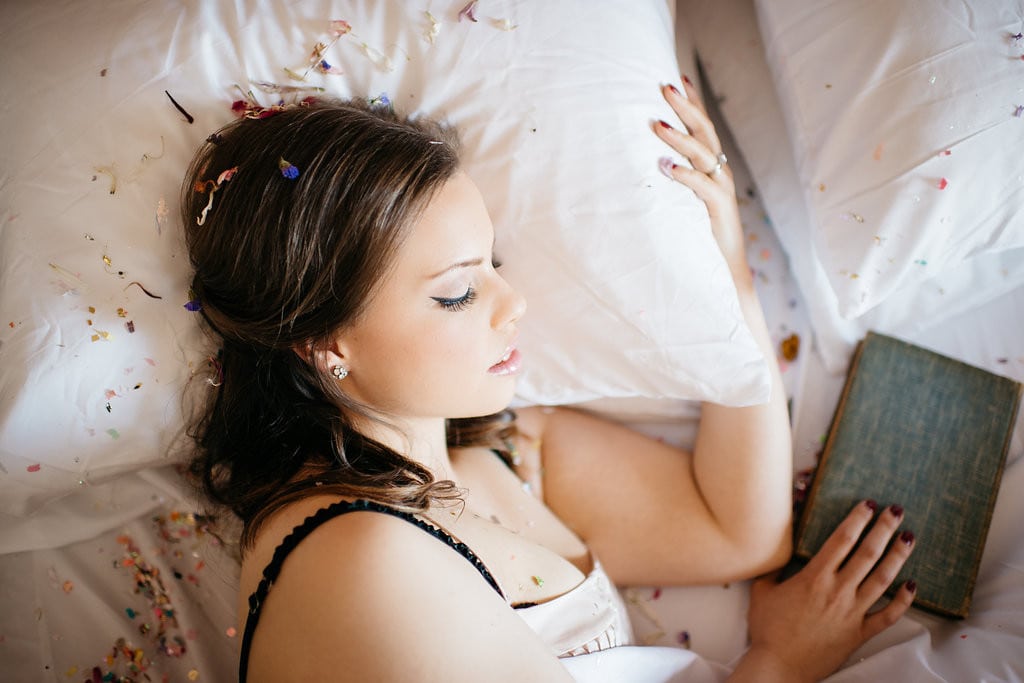
Just as having a morning routine is important to setting up your day, having an evening routine allows you to decompress, unwind, and actually get a restful sleep. (We all know how important sleep is, right?)
Again, your evening routine should be based on the things that relax you the most, but here are some ideas:
- Nighttime Teas: Start with a cup of chamomile based tea (or this Valerian Dream blend) about 30-60 minutes before bed. (No, you don’t actually have to time it, but when your day winds down and you know it’s time to chill out, that’s when you should have a cup.)
- Ambiance: We’ll cover this more in depth in Part 2, but as mentioned what we surround ourselves with makes a huge difference in our moods. Consider creating a calming atmosphere by dimming the lights or turning on a salt lamp (the glow alone is relaxing!), maybe light a candle or diffuse some essential oil, color, read, or maybe even listen to some calming music. (This Spotify playlist is one Cliff and I always used to fall asleep to, and now it’s my go-to for chilling out. I also really dig the Creamy playlist.)
- Limit Screen Time: I know in this day and age it’s pretty hard to do, but I think it’s a good idea to try and limit screen time about an hour before bed. (I’ve even set an alarm on my phone to go off at 8pm to remind me to put the screens away, and even if I decide to finish watching a show or work on a project, at least I am reminded to take notice!) At the very least, if there is an option to put on “night mode” (where the screen changes to a yellow tint), do that. (f.lux is a great app you can download for your desktop!) I also have a rule: no tv in the bedroom!
- Gratitude Journal: Consider starting a journal to chronicle all the things you had to be grateful for during the day. You can get your own blank journal and make up your own rules for how to use it each night, or there are plenty of guided journals on Amazon* if you want a bit more structure.
- Beauty Regimen: Caring for ourselves — inside and out — should be an integral part of the day. Maybe take a bubble bath, paint your nails, use a face mask, and/or moisturize your face to wind down the day. Any little thing that makes you feel like a million bucks. Right before you get into bed you can spritz your pillow with a calming pillow spray. (Remember me mentioning the power of scent/essential oils above?) I have a few random sprays I’ve gotten at Marshall’s, but you can even make your own!
- Meditate: Rather than fall asleep in front of a tv screen, if you need something to focus on I highly recommend falling asleep to a guided meditation. Once again, Insight Timer is my favorite app, with an entire section for sleep meditations, stories, and sound bites.
What does your typical day look like? Do you have routines and products that help you chill out and keep inspired? Let’s chat it out in the comments below!
*Medical Disclaimer: Remember I am not a medical professional, and the content above is not intended to be a substitute for professional medical advice, diagnosis, or treatment. Always seek the advice of your physician or other qualified health provider with any questions you may have regarding a medical condition.

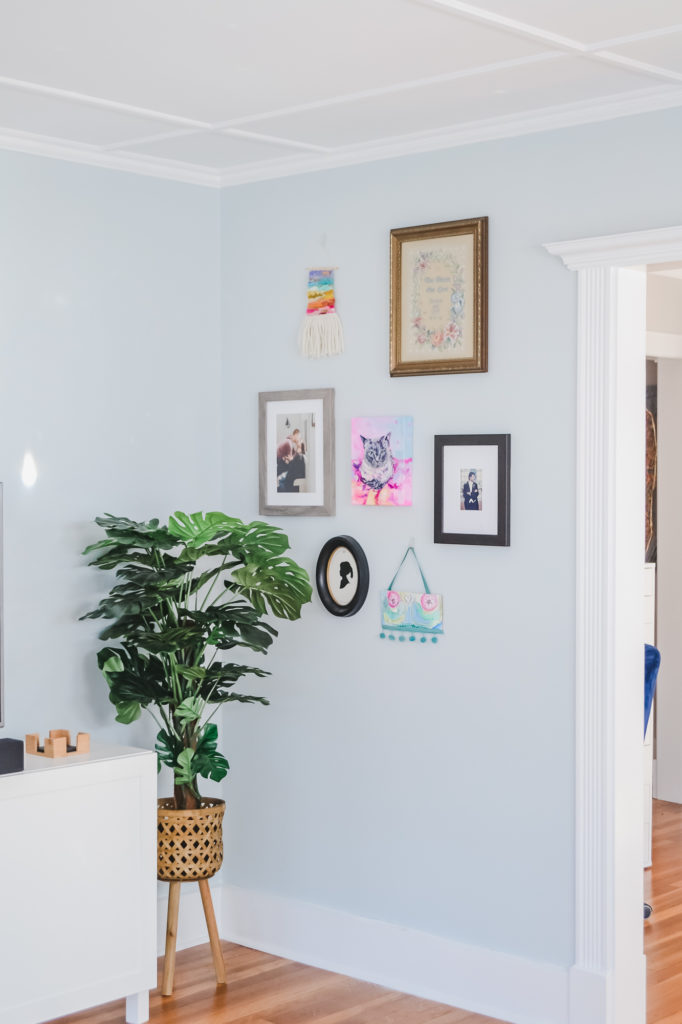
Now that we’ve worked on making our physical selves primed for all sorts of happy vibes, let’s do the same for our surroundings! It’s pretty much a given at this point that our environment has a huge affect on our mood and emotions. I’m not going to get into all the science and philosophy here because I want to skip straight to the good stuff — HOW we can make our homes happy.
*For the purpose of this section of the series, the word “home” means your surroundings. Yes, this includes your physical home, but it really can mean any space that you spend a lot of time — your house, a room, your car, a cubicle, an office. When thinking about creating a happy “home,” you want it to be a place to feel safe; your creative sanctuary or happy haven. If you want to get particularly abstract, your physical body can also be considered the home of your mind & spirit, so your clothes, products, and accessories should also feed your happiness using similar principles.
Experience the Details
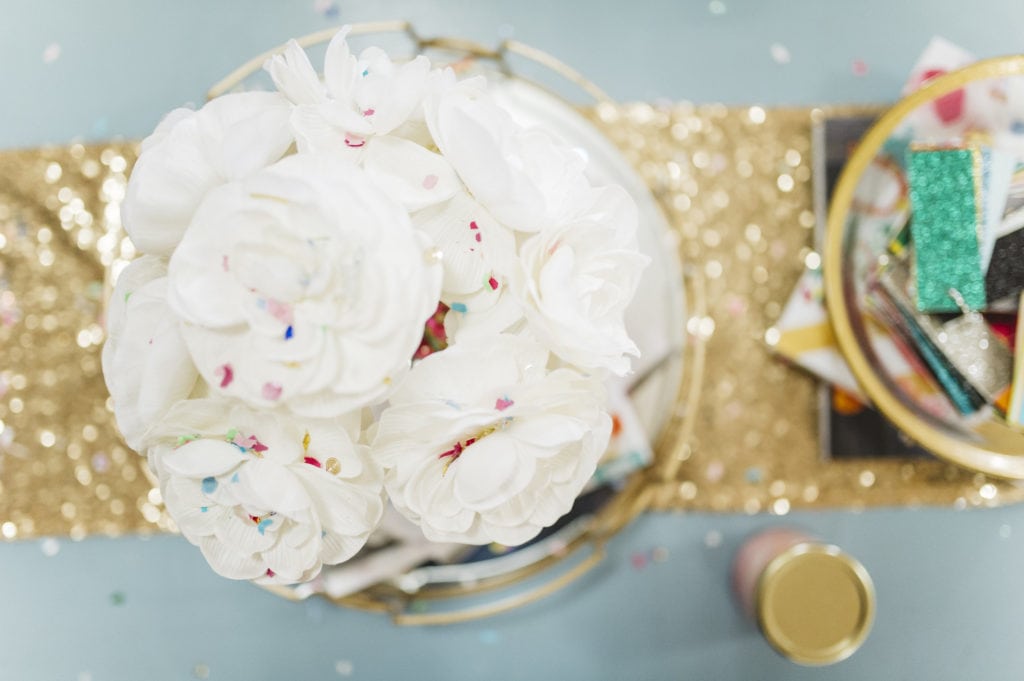
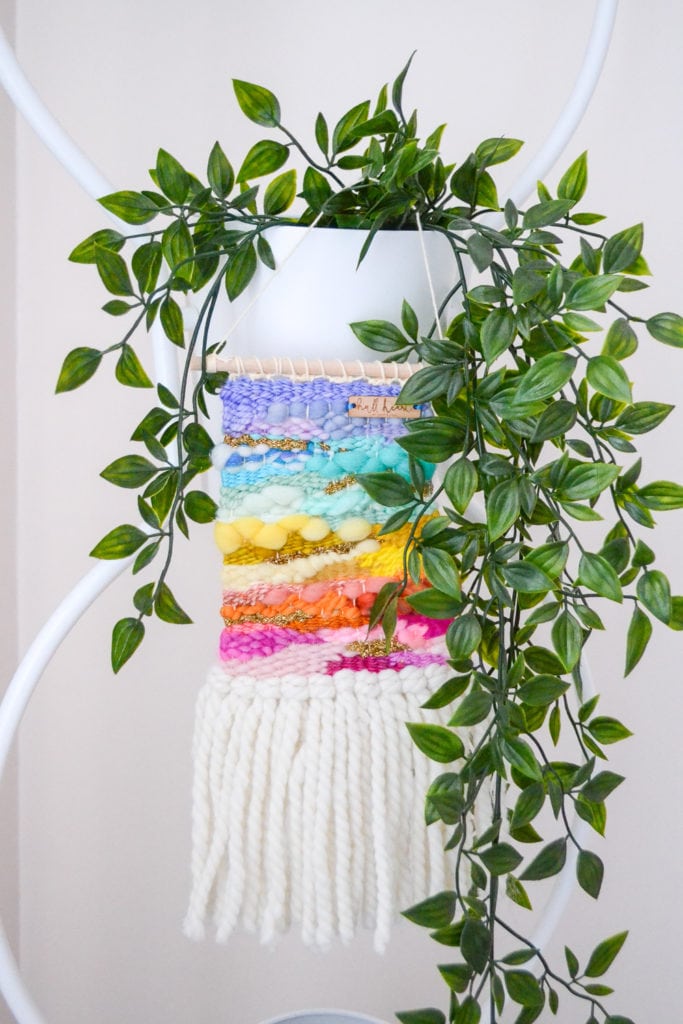
In the intro to this series we talked a bit about what happiness is/isn’t, and one of the things I hope you gleaned was that happiness is an experience. It’s not just one thing, it’s a culmination of thoughts, feelings, and emotions that generally stem from some type of positive encounter. (An idea that many successful brands understand.)
You want to focus on little things that make you happy and pay attention to detail. Everything from the color you choose to paint the walls to the scent of the candle you have burning and the type of music you have playing, to the taste of the drink you are sipping and the feel of the fabrics you come in contact with make a difference to the overall experience.

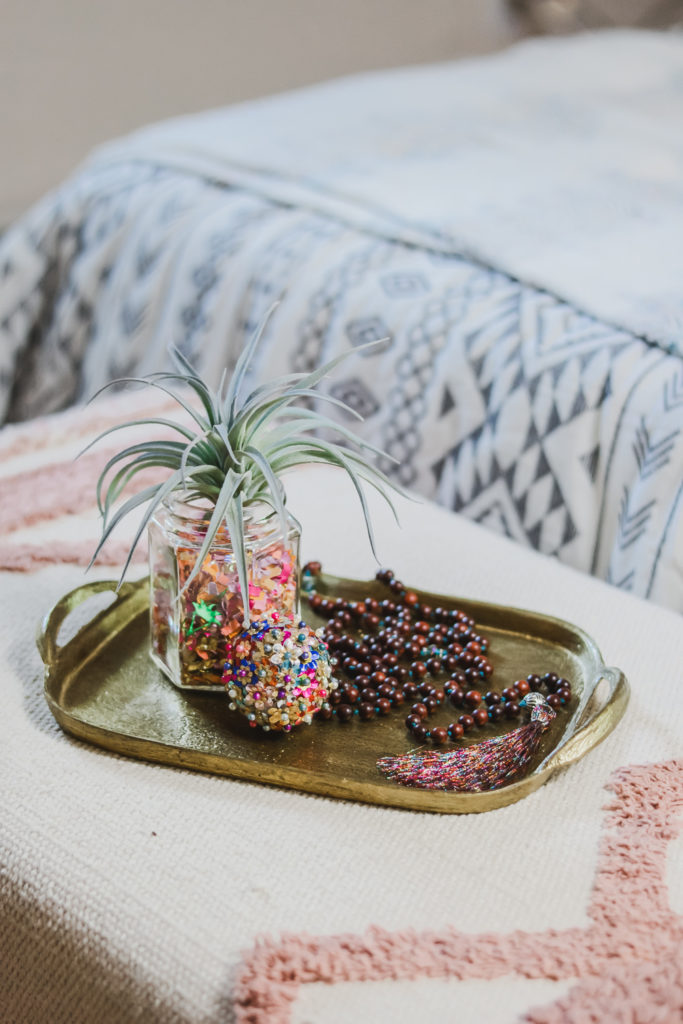
Designing for the Senses
An experience usually engages most (if not all) of our senses, including smell, sight, sound, touch, and taste, so that is something to keep in mind as you go about creating your space.
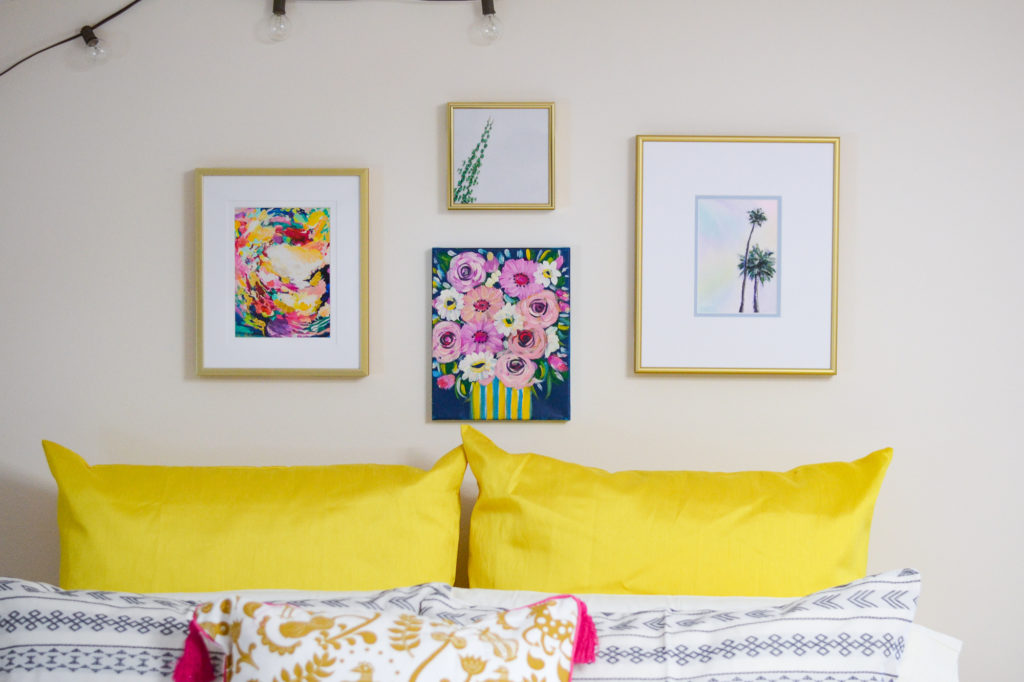
Here are some ideas for ways to engage each sense when designing what to put in and around your home:
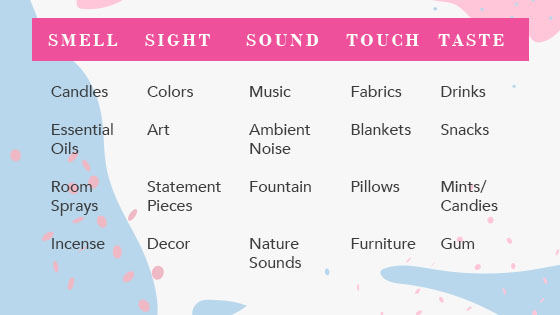
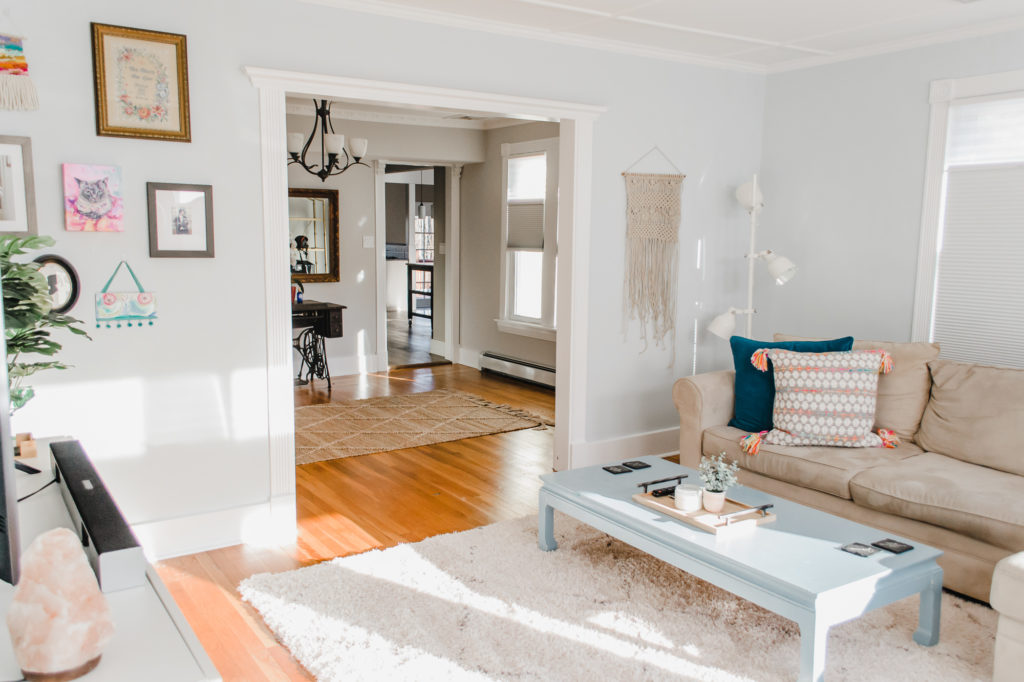
Also remember that in some cases an item might engage more than one sense at a time so you can actually have mini experiences inside the overall space. For example, I like to keep some scented confetti jars {confetti with essential/fragrance oils mixed in} hanging around for a few reasons: 1. It is visually pleasing (sight) 2. It smells magical (scent) and 3. It can be used as a tactile method of meditation, such as making a confetti zen garden (touch). (And if we want to get really crazy by way of some ASMR business, sprinkling the confetti can even have a calming sound!) BAM: the ultimate happy experience. 😁
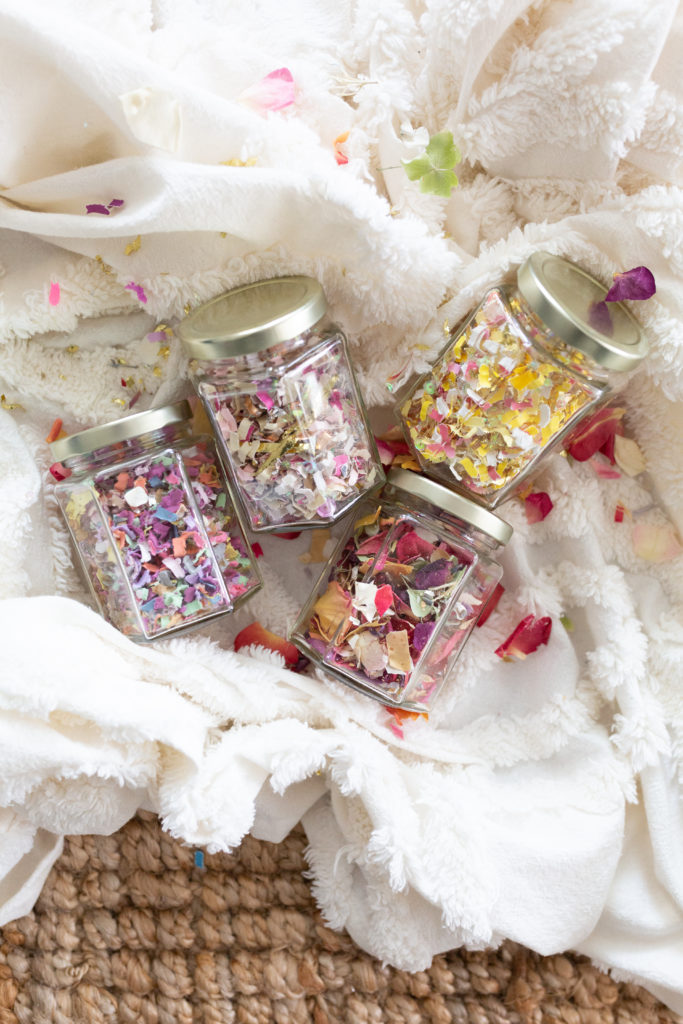
Feelings First
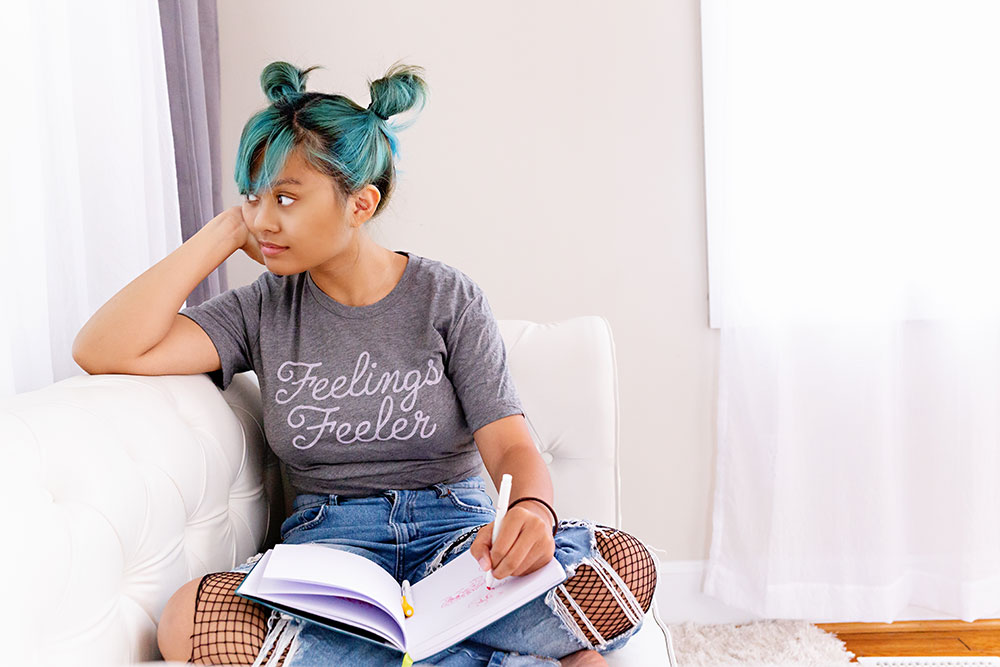
Before you can decide how to create a happy experience in your home, first find what emotion(s) you want to feel when you’re in the space (as this will affect the specific design choices you make). Do you want to feel calm? Energized? Loved? Motivated? Creative? If you have multiple rooms/spaces, each one might even have a different vibe.
As an example of how art & mood are connected, a short story: When Cliff and I moved into our condo at the end of 2016, I knew I wanted our bedroom to feel very calming so I made it a point to leave out any distractions — like a T.V.! — and chose art/decor that makes me feel at peace. (We were renting at the time, so I relied heavily on art/decor/furniture to create happy spaces since I couldn’t control the color of the walls or main layout of the rooms. Work with what you’ve got, people!)
When I first decided to paint a piece of art to go by our bed I started with the idea of making something calming yet colorful. As I was painting, though, something last minute came up so I had to stop, and then when I came back my day and mind were all over the place so I ended up with this:
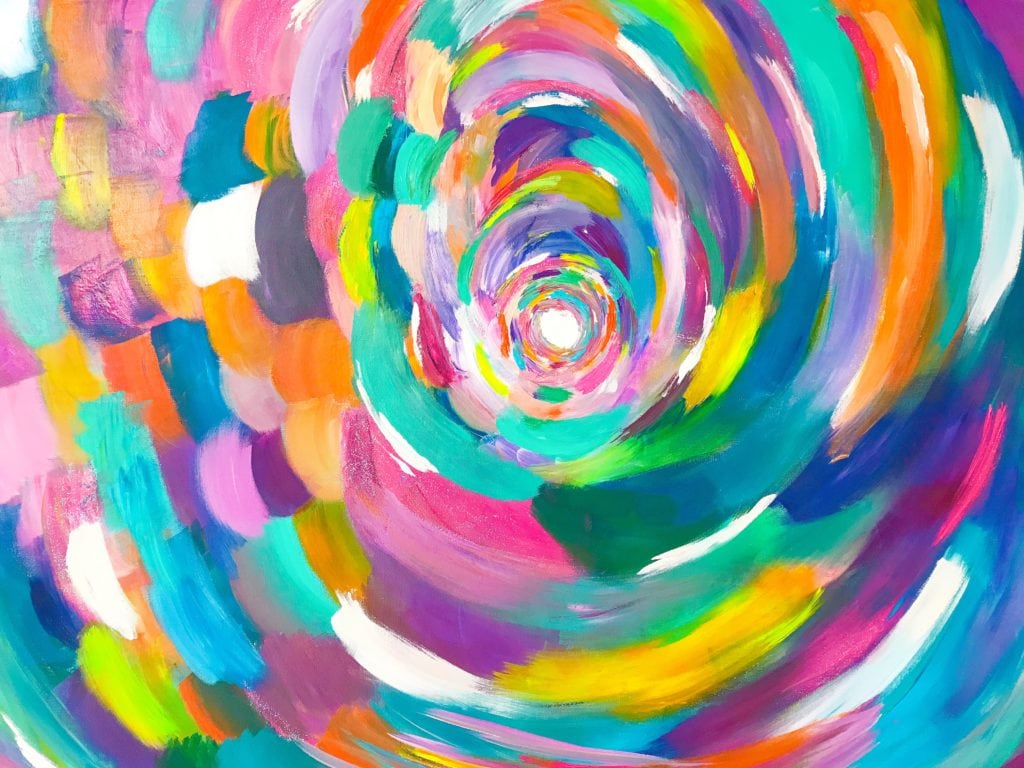
While it certainly checked the colorful box, it wasn’t exactly what I had anticipated on the calming front.😝🤦🏻♀️You know what happened when I put it in our room? I couldn’t sleep! The painting is so busy and loud and has so much movement that I found my mind literally reflected this.
So I went back to the easel and tried something else, this time making sure I was in the right headspace to create calm, and got this:
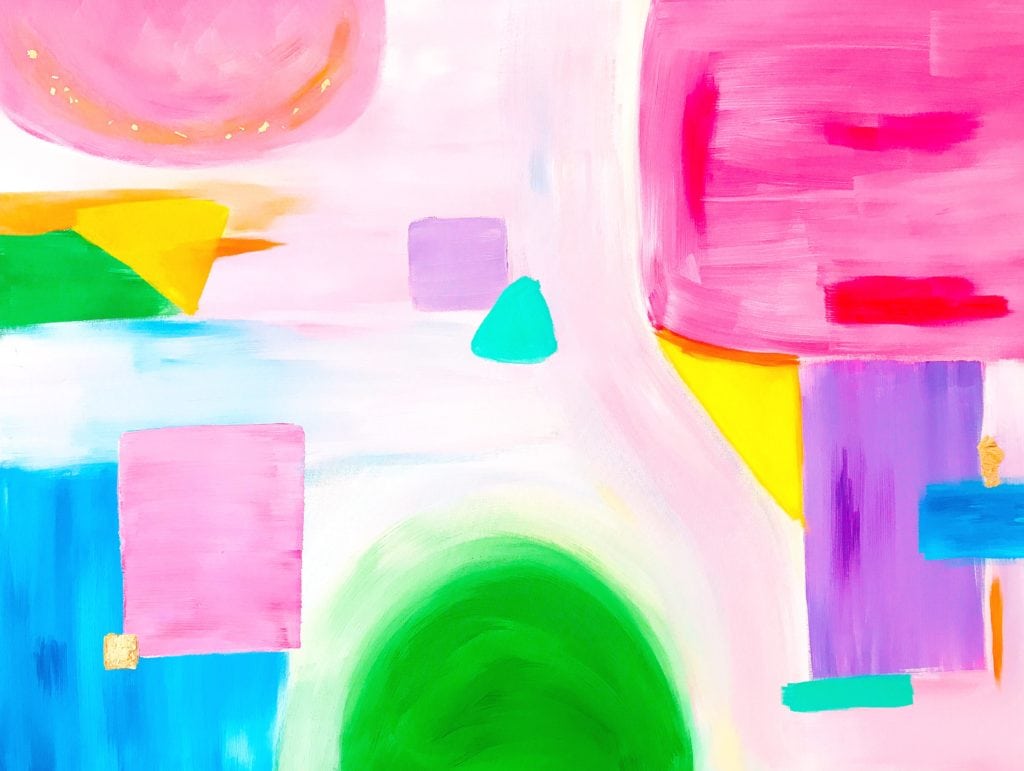
Muuuch better. The softer, blended tones and more abstract shapes almost reflect a dream-like state. (Which is why I named it “Welcome to Dream Land.”)
My point is this: pay attention to how the things you choose to surround yourself with make you feel. (In fact, this is a good general rule for life, not just decor!)
Color Me Happy
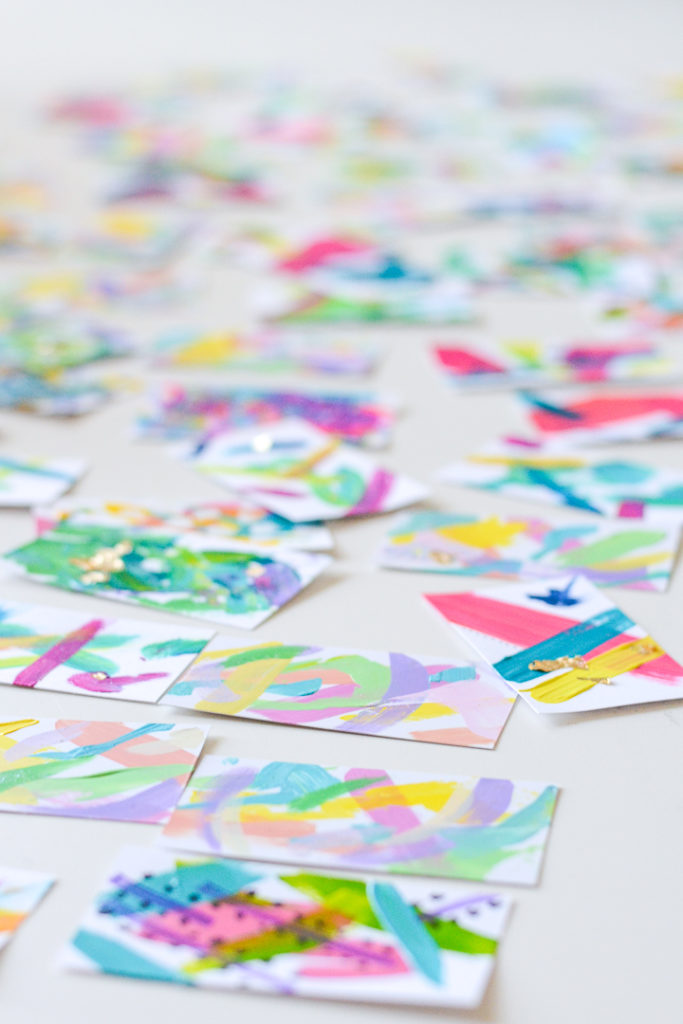
In the past I’ve talked about color psychology & how much color can affect our moods, but it is worth mentioning again here.
The colors you choose to surround yourself mean something, and if you want to be extra intentional with making a happy home, you’ll want to check out this post (where you can even get a free color chart download!)
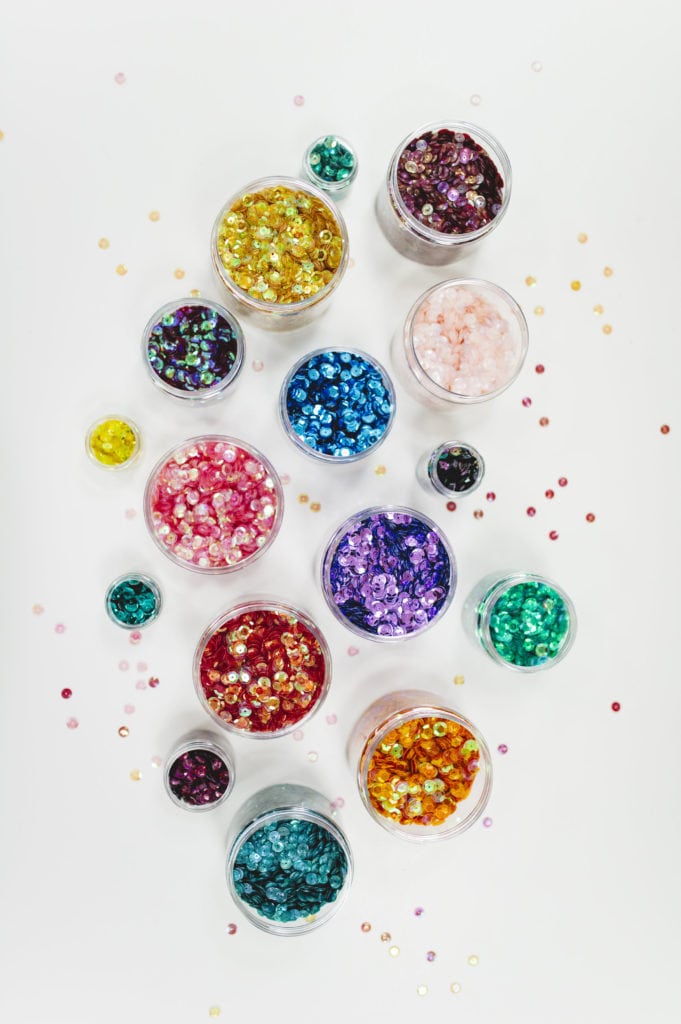
I, for one, like to feel lots of different feelings, which is probably why I love #AllThe Color!
For more ideas on incorporating color into your space, check out these colorful interior design ideas.
Get Inspired
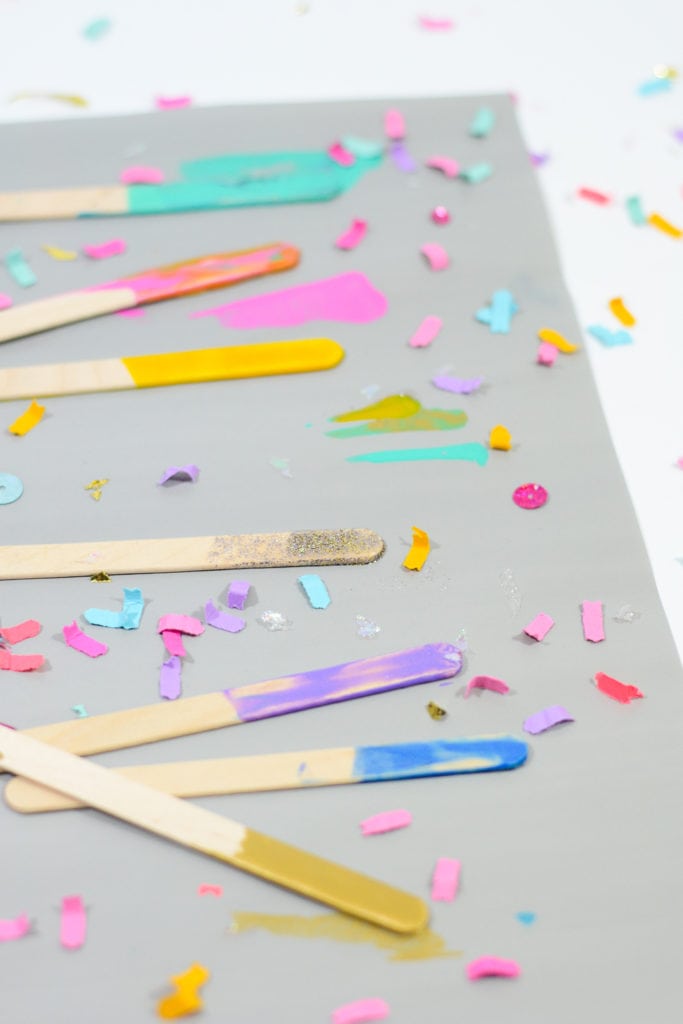
A good exercise for figuring out your desired style is to browse Pinterest / books / magazines and find what spaces/imagery you are drawn to, noting how you feel. (Save these images and you can even feel free to make a vision/mood board for your home!)
(I save a lot of photos on my House & Home Pinterest board!)
A Few Resources
Here are some of my other favorite shops & resources for colorful home decor inspiration:
Online Home Decor Shops
Gathered Home: Not only is their Pinterest account the stuff of color-coded dreams (like seriously, #goals), but I love all the magical, mystical (& of course colorful) qualities of the items they curate in their shop.
Hattan Home: Another mecca of colorful and glamorous goods, I love the Hattan Home philosophy of “loving your space, not just living in it.”
Furbish Studio: An eclectic & curated collection of more unique and one-of-a-kind items. I bought a sequin basket here once, and it makes me happy. ☺
LuLu & Georgia: A “go-to source for colorful and trendy home accents,” and I dig that they have a large collection ranging from small items to larger statement pieces.
Society Social: While they have a lot of great happy & bright items here, I seriously covet this pink Carmen Credenza.
And don’t get me wrong — Target, Marshall’s/HomeGoods/TJ Maxx, & Ikea are also totally my jam! And I love finding unique pieces at thrift/antique shops.
As long as the decor/furniture/art makes you happy, it doesn’t matter where it comes from.
Books
This Can Be Beautiful by Tiffany Pratt*
Happy Home by Jennifer Paganelli*
Your Creative Work Space by Desha Peacock* (Psst you miiiight even see a familiar face featured in here! Our old Confetti Land studio is on pages 168-173)
Happy Home by Charlotte Hedeman Gueniau*
Design Your Space
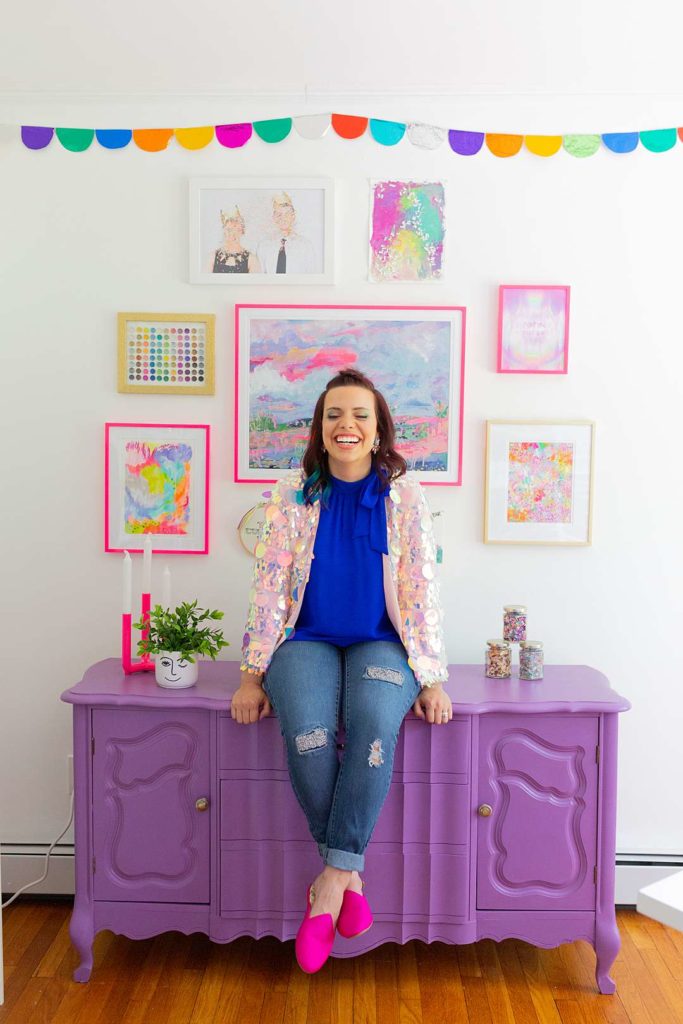
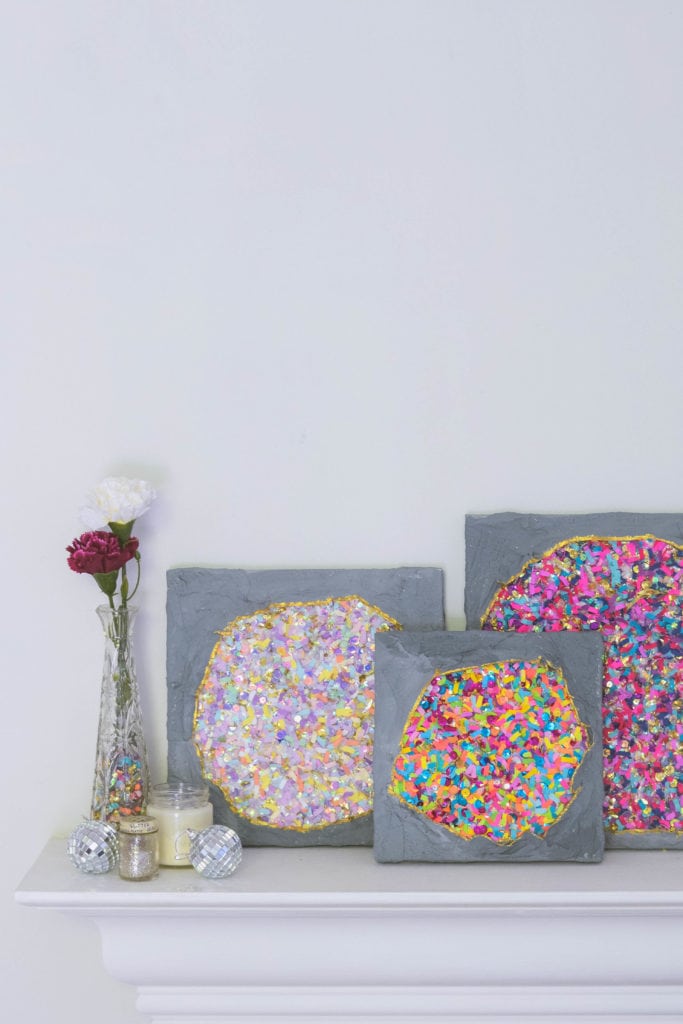
(Psst…you can check out some original art here!)
As you go about designing and developing your own little happy home, here are a few things to keep in mind:
- Remember to start small if you’re feeling overwhelmed — focus on one room or section at a time if you need to. (Maybe start by creating a happy bookshelf, or a happy nook if that seems easier to manage.)
- Focus on feelings first and foremost — constantly ask yourself “how does this make me feel?” If the answer is anything positive, know that matters more than if it “fits” with the room or is perfectly styled.
- Accept that we go through many seasons of life — things can change, and your space should change to suit your needs and desires, too. Maybe you just need to switch up some throw pillows, or maybe you need an entirely new look. Things that once made you happy may no longer do so, which means it’s time to let go.
What steps can you take to turn your home into a happy haven? Do you have a piece of art/furniture/decor that makes you happy any time you look at it?

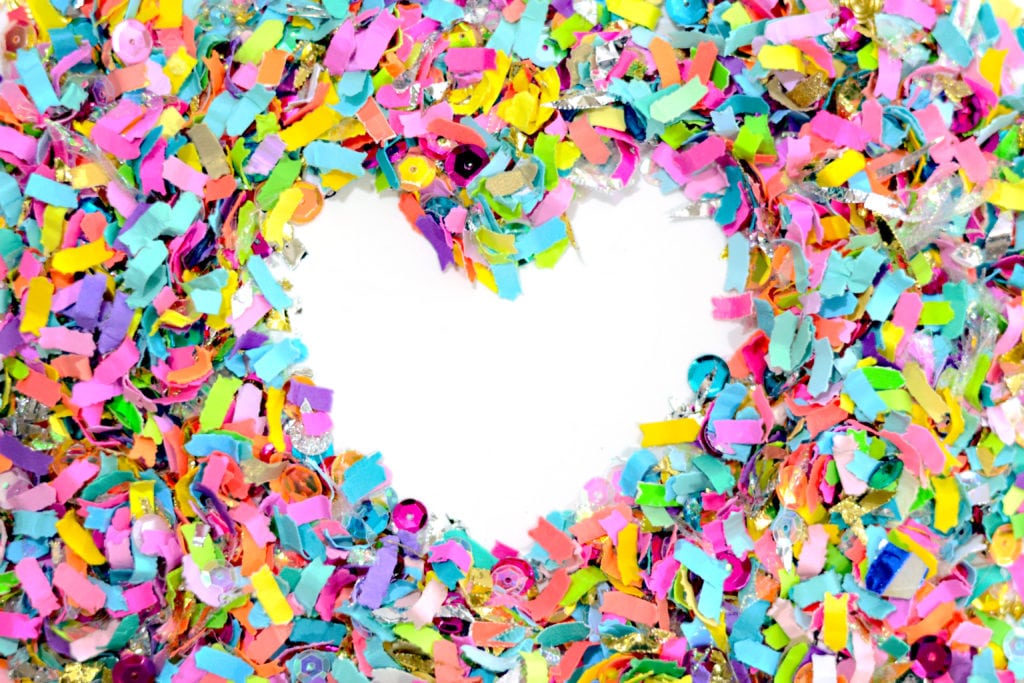
Now that we’ve worked on designing happy bodies and happy surroundings, it’s time to get to the real work: our hearts.
We’ve covered the more surface level aspects of building a happy life, so now it’s time to get to where the truly deep, transformational stuff happens. (Where true happiness comes from.)
There are many ways to approach this, and each person’s journey will look a little different, but I thought it might be most helpful for me to share five best tips for creating happiness. (And then you can see what you think needs the most work for you personally.)
1. Be nice (to yourself and others)
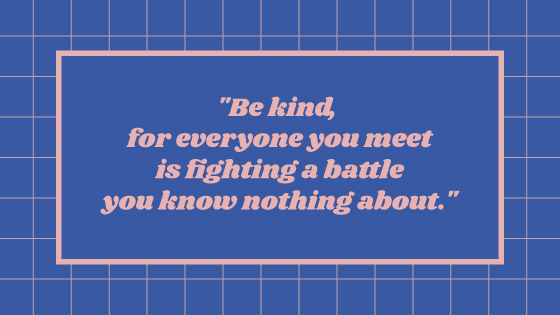
My very first (and best) tip for creating your own happiness is simply to be nice…even if you don’t want to.
Why?
Because. (Hah – do I really need to explain this one?)
In all seriousness, being nice is actually one of those things that is so easy to forget how simple it is, but it feels good, it makes other people feel good, and it’s just the right thing to do.
Sure, we all have bad days, but that’s no excuse to take it out on others (or yourself) in a negative way.
How?
Learn to apologize. Own your mistakes — we all make them. It’s unrealistic to think we can be perfect, but it is realistic to become more aware of how we act when we do mess up. Say you’re sorry. (And mean it.)
Avoid judgement. It’s human nature to judge other people. We all do it, even if we don’t want to admit it. But there is a difference between making a snap judgement (that you only assume is the truth) and taking the time to understand a situation from the other side. Courteous, productive, and constructive dialogue is essential, but uneducated, cruel, or mean spirited accusations usually do more harm than good. By trying to avoid chiming in on topics you really aren’t qualified to chime in about, it will prevent a lot of unnecessary drama.
Don’t use “honesty” as a free pass to be inconsiderate. How many times have you heard someone say something along the lines of, “Your shoes are the ugliest things I’ve ever seen. I’m just being honest.” While I do believe honesty is definitely something to live by, that doesn’t mean you can use it to excuse any potentially hurtful thing that pops into your head and out of your mouth. I think sometimes the ‘I call it like I see it and I’m unapologetically me’ type mentality is glorified in a way that makes people forget their actions still affect others. There is a way to be truthful and constructive while still being considerate. In this case I prefer to go by the old adage: if you don’t have anything nice to say, don’t say anything at all.
Realize that when others treat you poorly it’s often not personal — their actions say more about them than you. Sort of as a follow up to the last point, someone else’s lack of nice-ness is also not an excuse to lose your own temper. Usually people who act out and have no filter are the ones who need a little bit of extra nice in their lives the most. You can’t control them, but you can control yourself. Kill ‘em with kindness.
Think before you react. Take a step back and a deep breath and evaluate the situation from all angles.
2. Stay committed
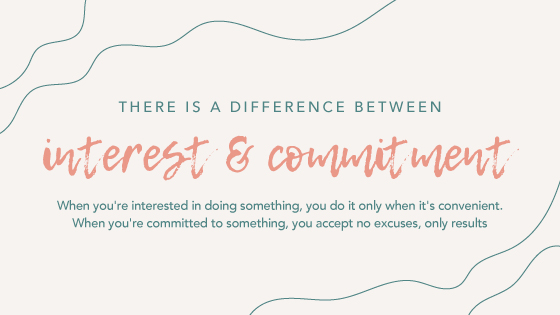
Why?
Commitment is an integral factor to your success, in happiness and anything else for that matter. Commit to yourself, commit to your ideas, and commit to those counting on and/or rooting for you. Saying you’re going to do something — and then actually doing it — is a super powerful feeling. (Remember we talked about self-confidence being at the root of happiness? #fullcircle)
Now this means you’re going to have to put some kind of effort into the things that will make you happy (changing your diet, saving money, bettering yourself, etc.), but that makes the reward so much greater. It’s easy to be all talk and say you’re going to do something, but the follow through is even more important than the end result.
How?
“Just do it.” We can all take a page out of Nike’s playbook with this one.
Make a plan. Ok, so sometimes maybe it’s easier said than done to make something happen. By creating a plan or to-do list for yourself it can help to break what might seem like a too big task down into smaller, more digestible pieces.
Accept no excuses. It’s easy to find excuses. Like, really easy. “I’m too tired. I’m too busy. I don’t know how. My car is out of gas.” Try reframing your thoughts to eliminate any possibility of excuses, and instead go into problem solving mode.
Be persistent. Even moreso than being consistent, being persistent in your pursuits will serve you in the long-run. Never stop trying; never give up.
Dream big, yet be practical. (What I’ve dubbed The Rational Unicorn Theory™️) I’m all for big dreams. Huge dreams. Gigantic dreams. But big dreams will always be just that — dreams — if you don’t have some sort of practical way to make them happen.
3. Practice balance & harmony
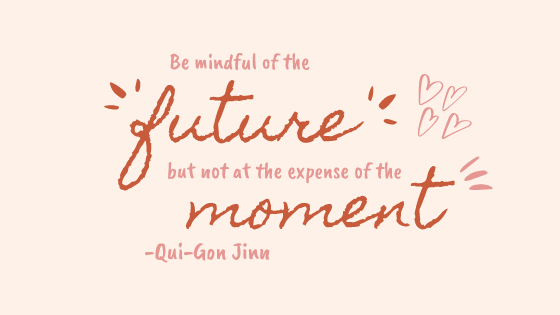
Why?
Think of happiness like the fulcrum of a scale — you need things on both sides to even it out. Whether too much or too little, extremes on either side of the scale often put unnecessary pressure on a situation. This pressure can come in all sorts of forms: pressure from others, from social media, from yourself, from the clock…
Balance — and in turn, harmony — is all about choice. Make choices that align with your life goals, but also don’t beat yourself up if there are a couple exceptions to the rule.
How?
Simplify. Less stuff means there is less to manage (physically and emotionally). Simplify things to only the essentials and your focus can be more clear.
Make priorities. A common excuse for not doing something is often “I don’t have enough time.” Timing is all about priorities, though, so how you choose to prioritize things has a direct correlation to your level of commitment.
Ask how things can be better while knowing they are already good enough. Practice gratitude and acceptance and know that things can change, both for better or worse, so there is no use trying to change things you can’t control. Push yourself or your idea to be the best version it can be, but do so in a way where it is ultimately about growth and evolution.
Be thoughtful, but don’t overthink. Focus on both the details and the big picture, but don’t let either overwhelm you.
Dial the “noise.” Know when to look to others for support and encouragement, but also know when it’s time to take a step back and regroup with your own thoughts.
Allow yourself to be sad. You already know I’m a firm believer that happy people should still sometimes feel sad. In fact, I welcome it. Feeling sad or upset or angry is not a sign you’ve failed at happiness. (In fact, a good ugly cry now and then is quite cathartic!) Feeling all sorts of emotions is a good thing — it means we’re human, it gives us depth. The key, however, is not to dwell in sadness or self-pity or depression or anxiety or any other “bad” feeling for too long. Experience it, accept it, and then choose to move on.
4. Keep true to you
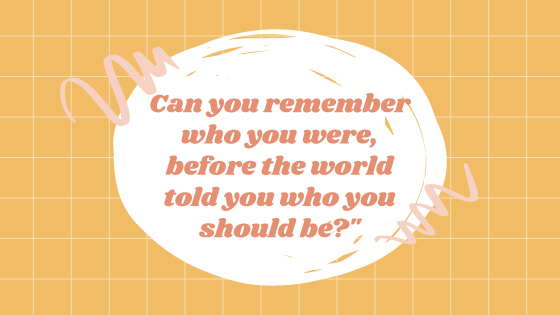
Why?
In order to be unique, authentic, original and happy with YOU, you need to spend more time working on your own stuff than focusing on what other people are doing. In an age of information overload, social media, and reality tv it’s super easy to get too caught up in the lives of others. Focus on your own stuff first and foremost. It’s awesome to inspire others and be inspired, but put your own spin on things. Don’t be afraid to think differently. Don’t assume you need to listen to what others tell you if it doesn’t feel right.
How?
Quiet the noise. Just like learning to dial the noise is important when looking for harmony and balance, knowing when to silence it completely is the next big step. Ditch as much negativity as you can, whether it’s in the form of social media, toxic relationships, or self-deprecation.
Self-reflect — be honest with yourself about your insecurities. Truth builds confidence so it makes sense that in order to be truly happy you need to be honest with yourself. To figure out what kinds of things you’re insecure about, start by looking at the things you’re afraid of or get defensive about — chances are these things will speak to the heart of a deeper truth. Don’t be afraid to dig.
Use inspiration and collaboration as fuel to spark your own creativity, but don’t rely on others to define yourself. It’s true it can be really helpful to surround yourself with positivity and amazing things can happen from teamwork and collaboration — but only if it is a true melding of individual personalities that each bring something unique to the table.
Care for yourself. Emotionally and physically. Understand what you surround yourself with and what you put into your body all affects you. Toxic people, toxic situations, and toxic foods have a way of seeping into your pores and creating a lot of ugliness. Don’t let that happen.
Trust your gut. Literally and figuratively. Understand that anxiety, pain, depression, and stress are ways your body communicates with you.
5. Take things one step at a time
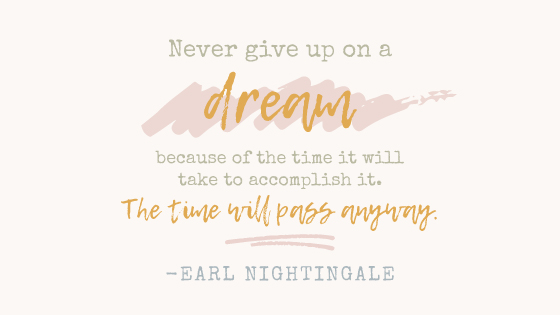
Why?
In this moment, right now, you are the sum of every choice you have made up until this point, and the choices you make from this moment forward will determine what happens next. Most things worth doing take time — don’t rush them. In fact, let’s try to ignore the pressure of time altogether. I mean what does time really mean, anyway? It seems we’re always in a hurry and we want things fast and cheap and it’s too easy to rush through life. Instead be focused on building a solid foundation that will sustain you long term. There’s no “quick fix,” but there shouldn’t have to be.
How?
Practice patience. Remember that things happen in their own time. Rushing through life is not really living it.
Remember why you started. Find your WHY. Don’t lose sight of what truly matters.
Take baby steps. Aim for slow, steady growth.
Enjoy the journey & have fun! Slow down. Be present.
Don’t forget to breathe. Inhale + exhale. It’s all going to be OK.
Free Workbook
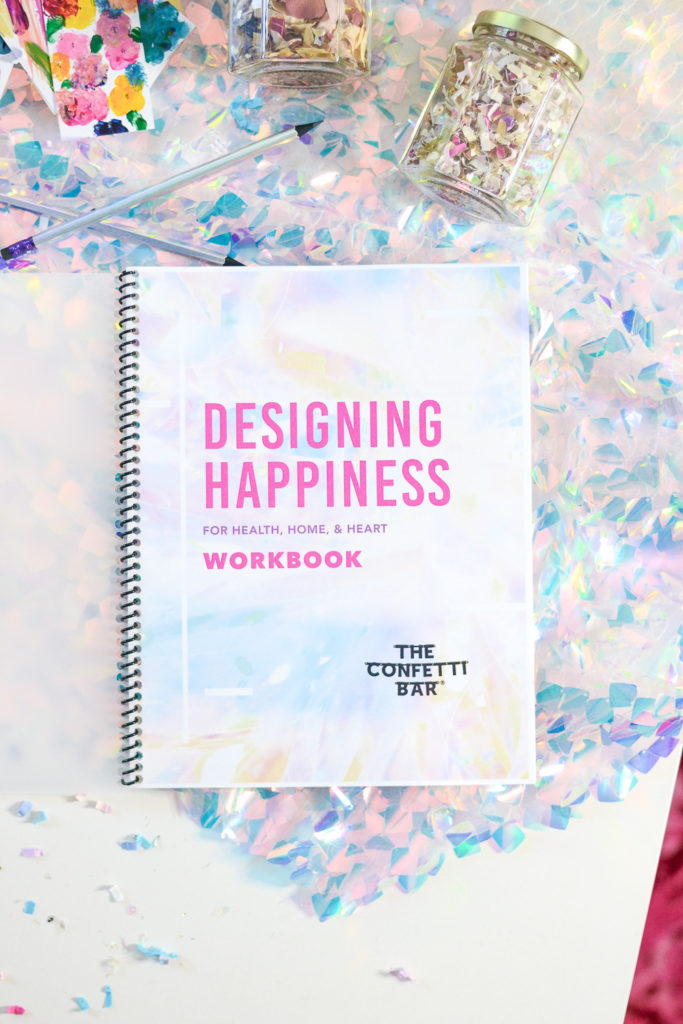
Now that you have the framework, to help you on your journey we’ve created a workbook to go along with this series! Simply download the digital file below, print it out, and get to work designing a life you love. 💗
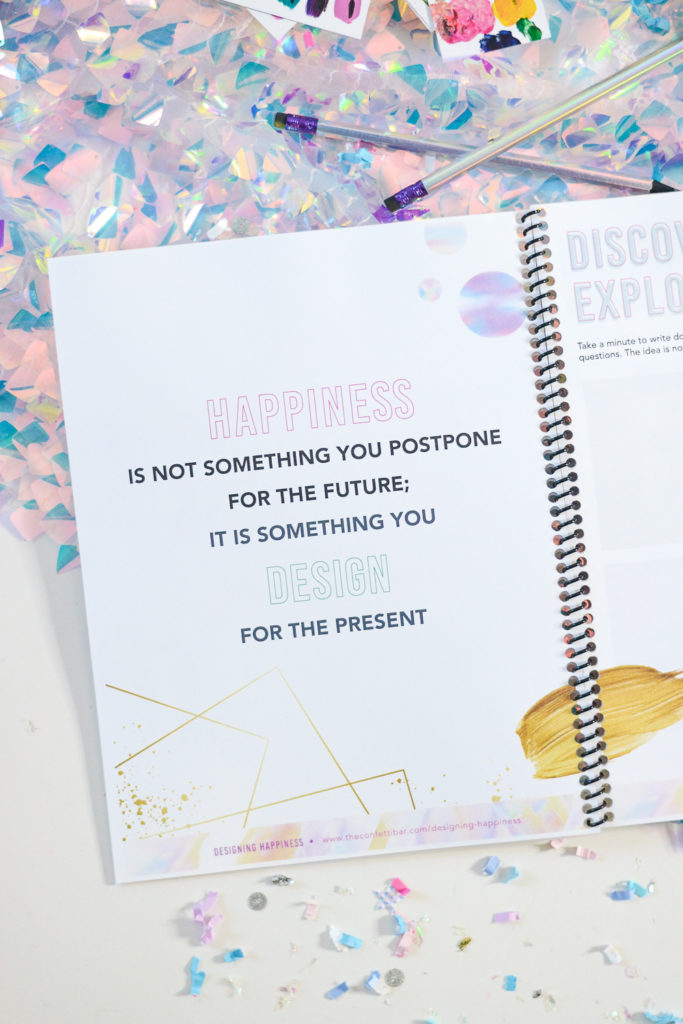
If you’d like to be all fancy, you can send the PDF to be printed and bound at a local print shop! (I got this one printed/bound at my local FedEx print center for less than $20.)
You can also feel free to print multiple copies of some of the pages, as you’ll probably want to revisit them for various aspects of your life. 🙂
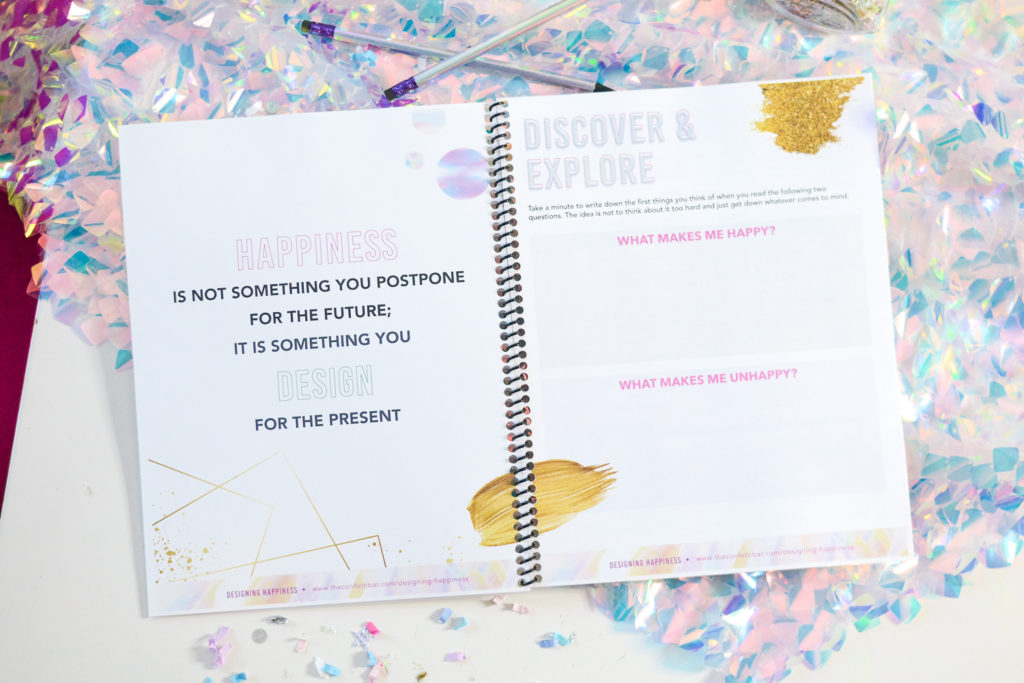
➡ TAP TO DOWNLOAD THE WORKBOOK HERE
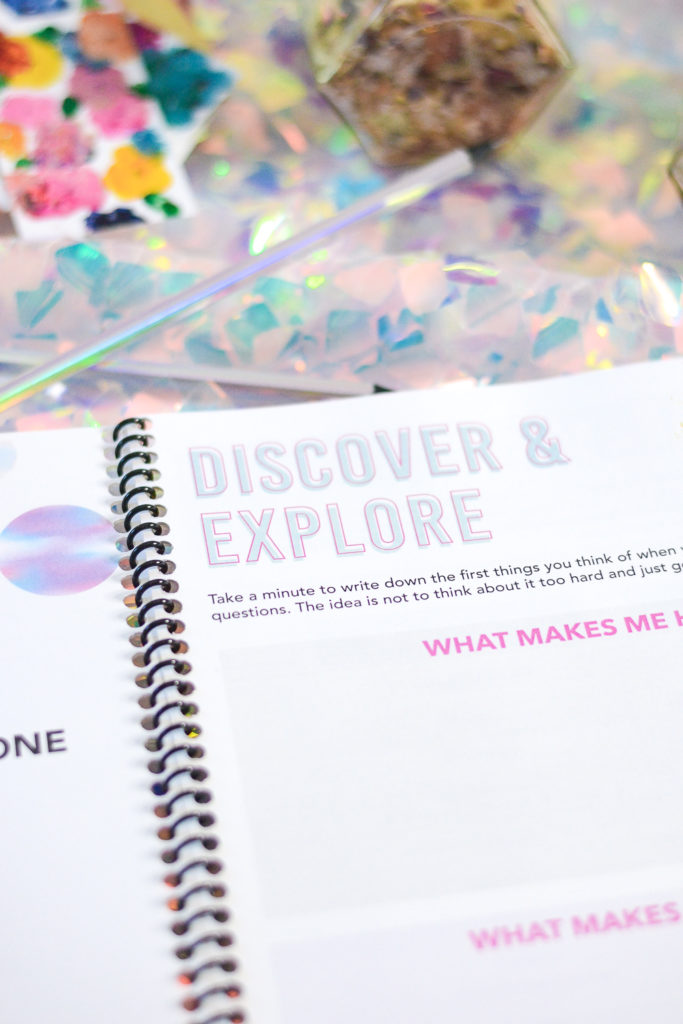
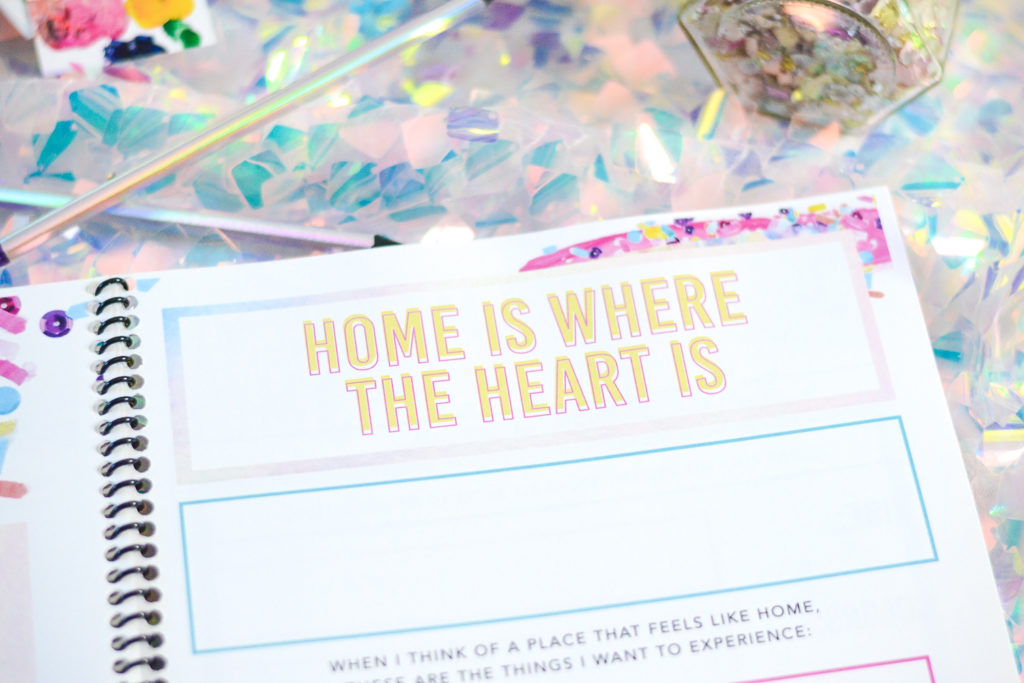
What’s Next?
Ok, that was a boatload of information to throw your way, and I know it can feel overwhelming. I suggest coming back here now and again to re-read sections until they stick.
If you found yourself nodding and “yes!”-ing and thinking deeper throughout this post, but still aren’t quiiiiiite sure where to start, consider following these steps:
- Download and print the workbook above. (Don’t just think about it, do it! It’s free, there’s no excuse. 😉)
- Work through each section of the workbook, taking your time to fully think/reflect/plan. Print multiple copies (or simply write in a notebook) to tackle various aspects of your life one at a time, if necessary.
- Come back regularly to check the Inspiration Center for topics that will relate to our three main pillars: design, wellness, and lifestyle.
- Engage by asking questions and sharing your own resources/tips/techniques in the comments (of this post and all posts!)
- Don’t forget to have fun. 😊
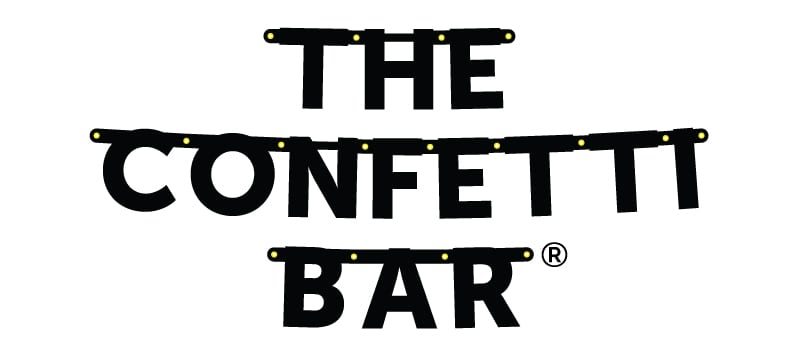
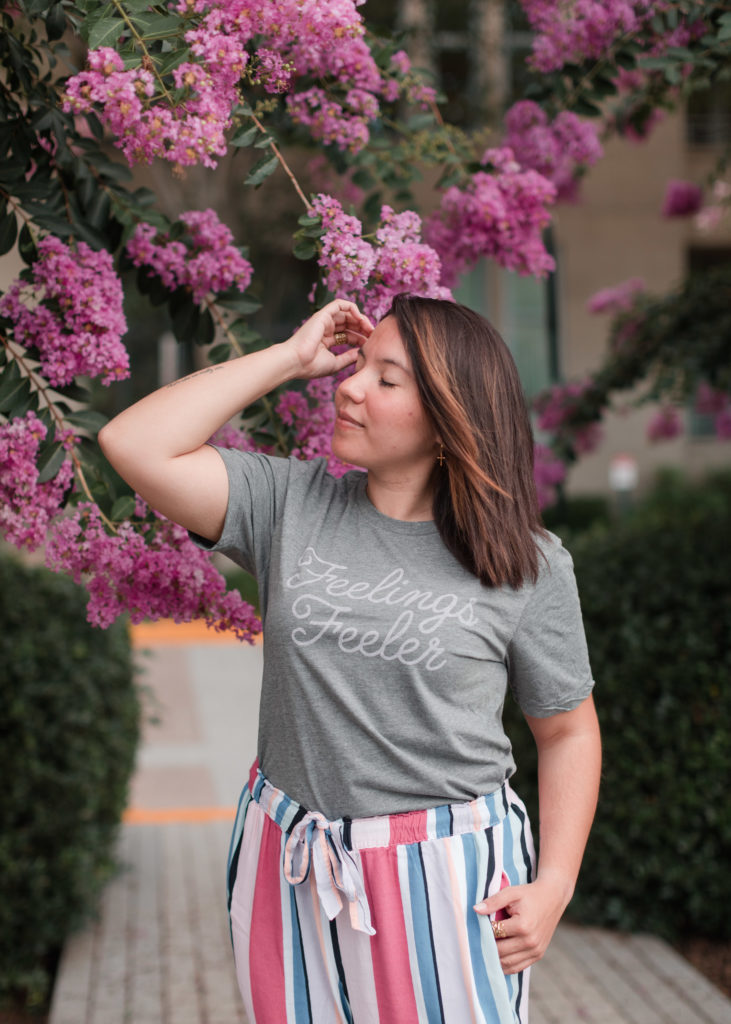
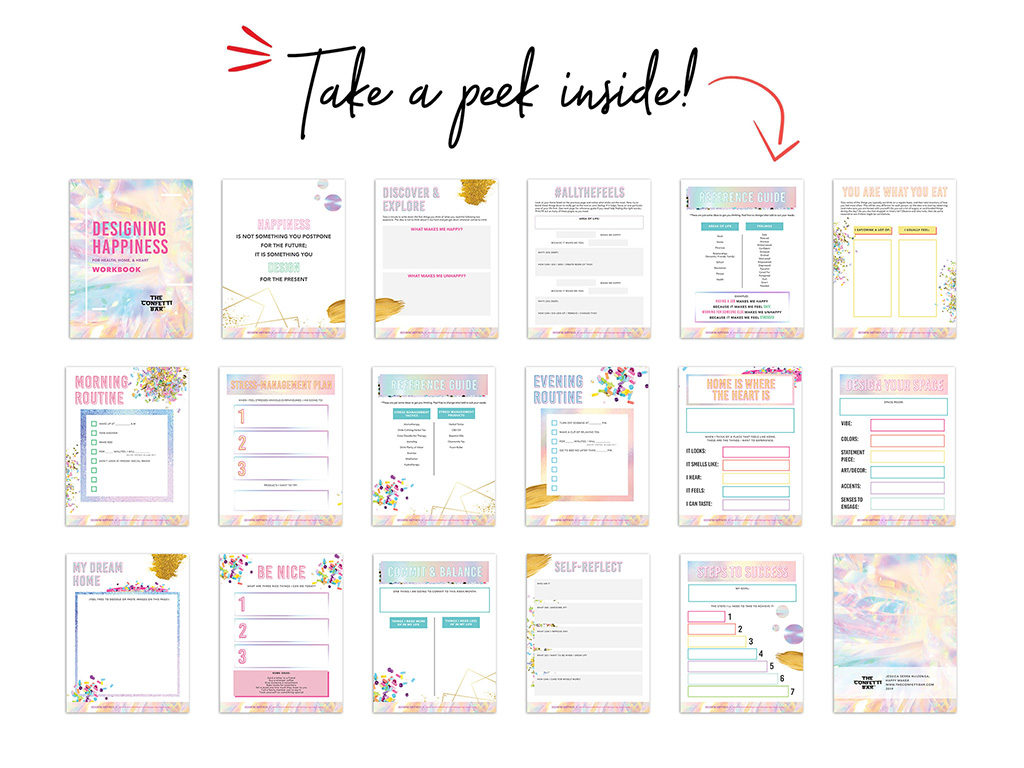
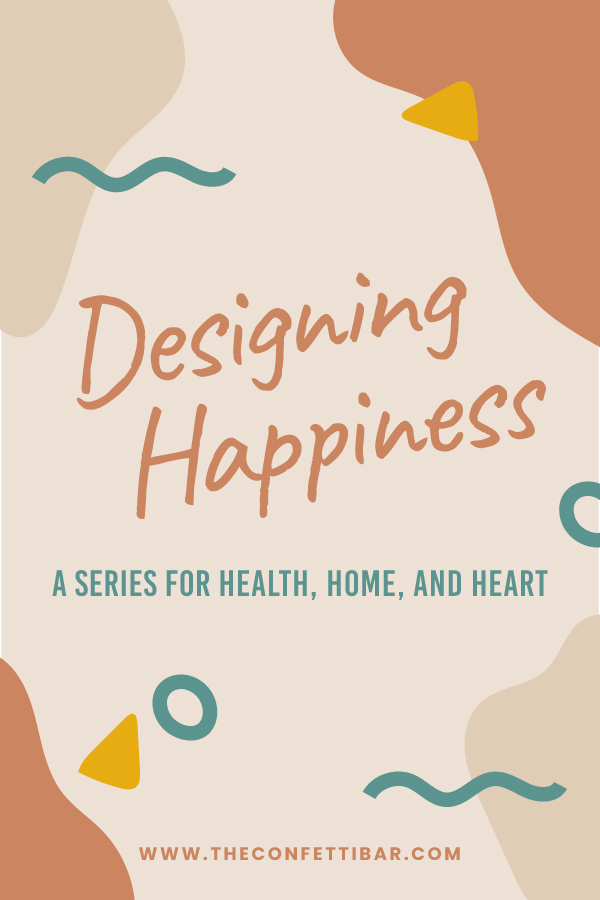
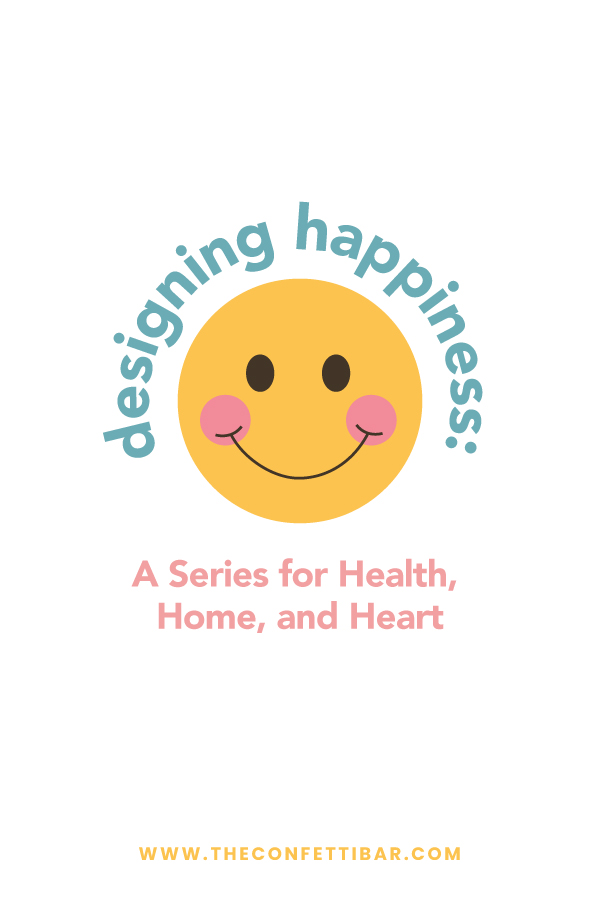
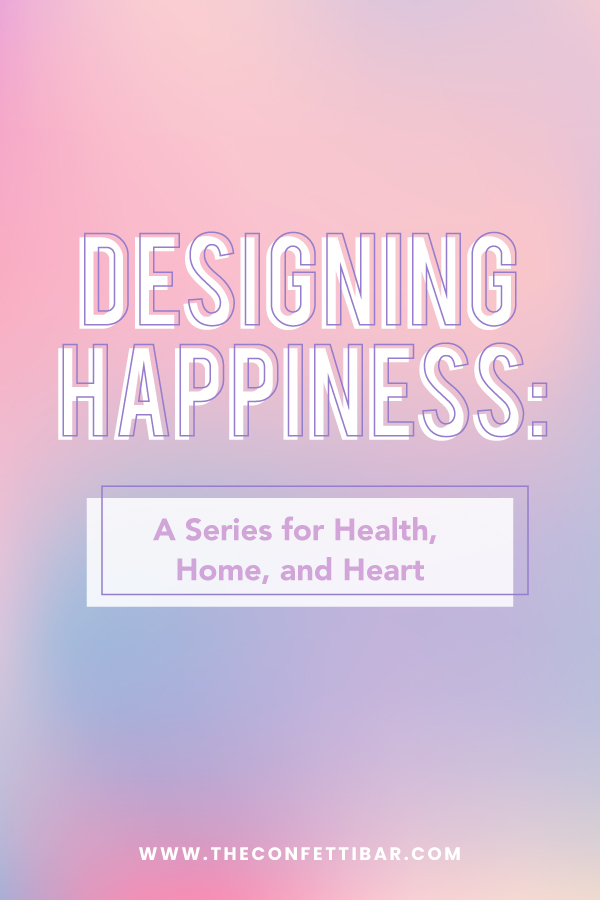
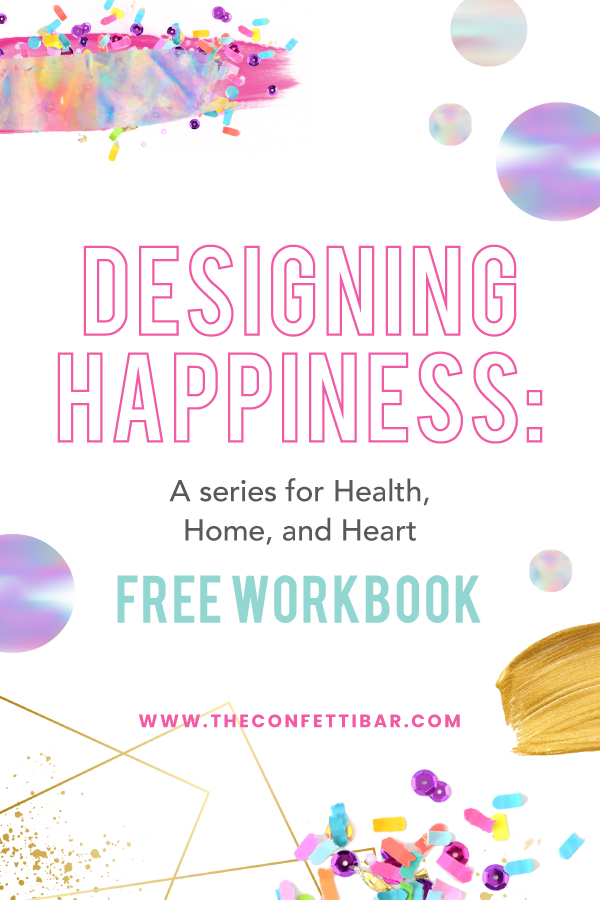
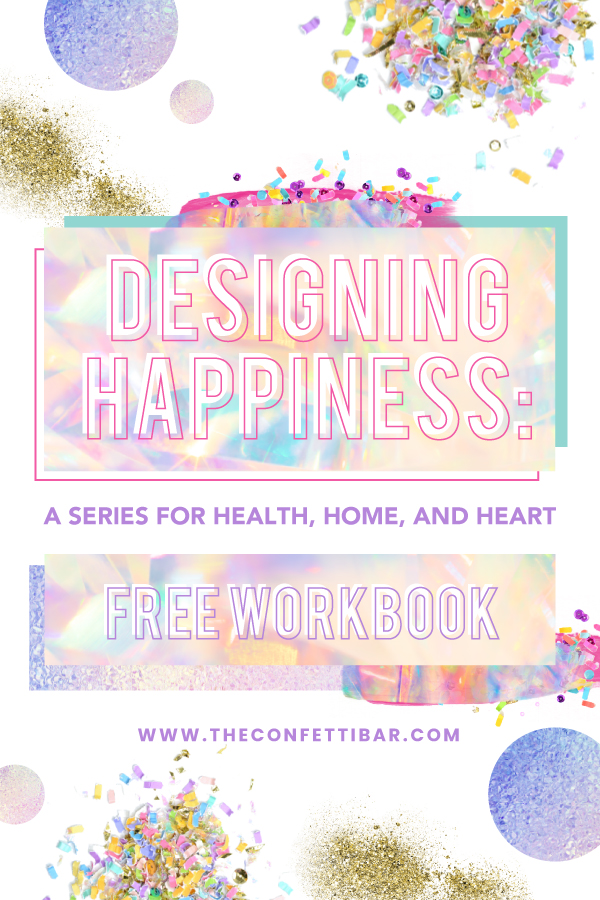
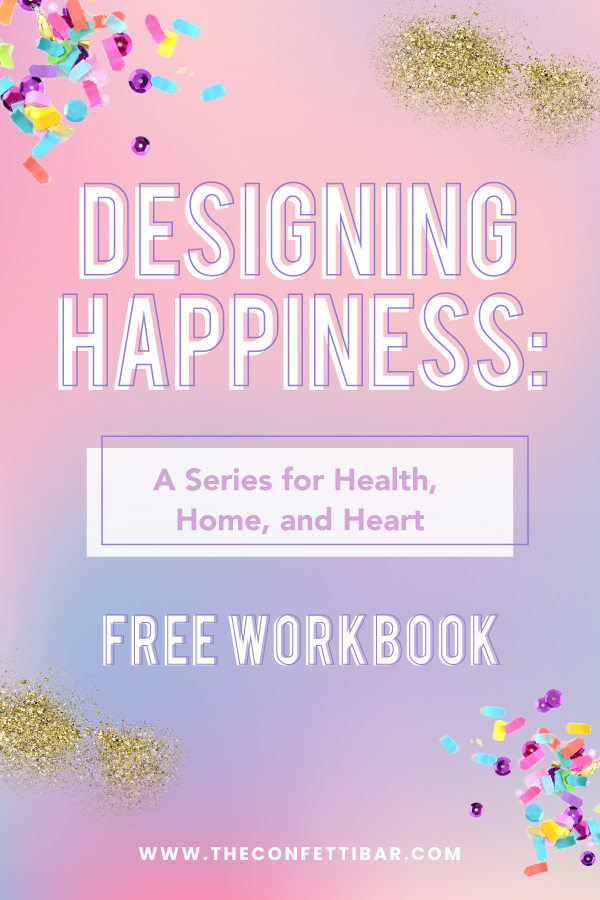
It’s an amazing article. I really enjoy it reading and learn many things from here. This is really praiseworthy and helpful. Well done.
Thank you so much! <3